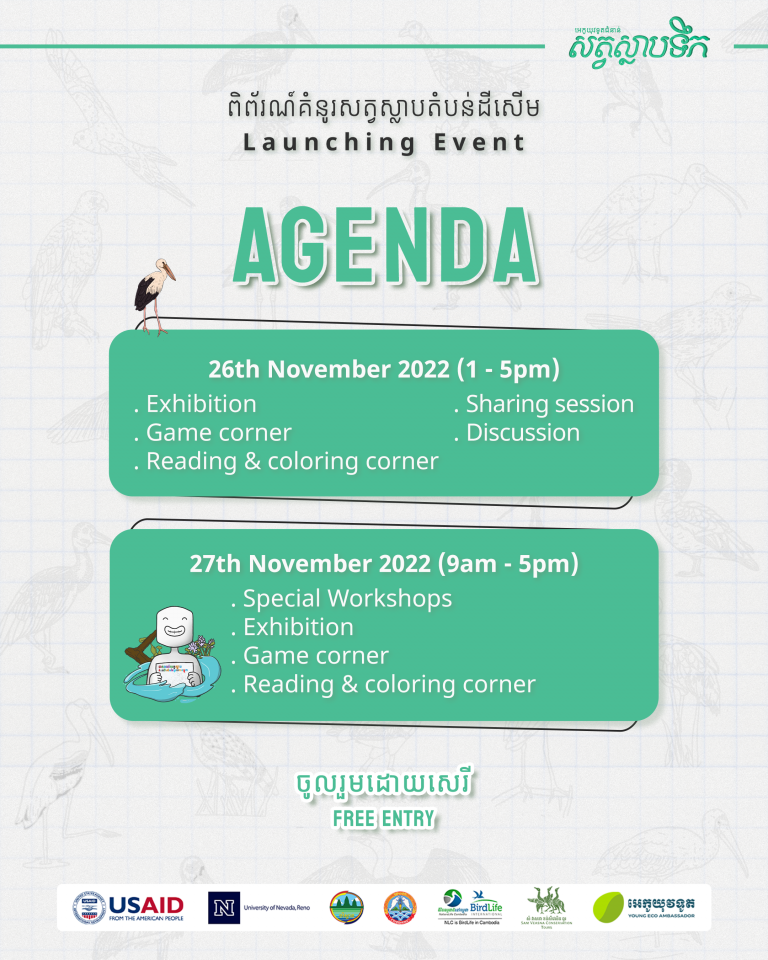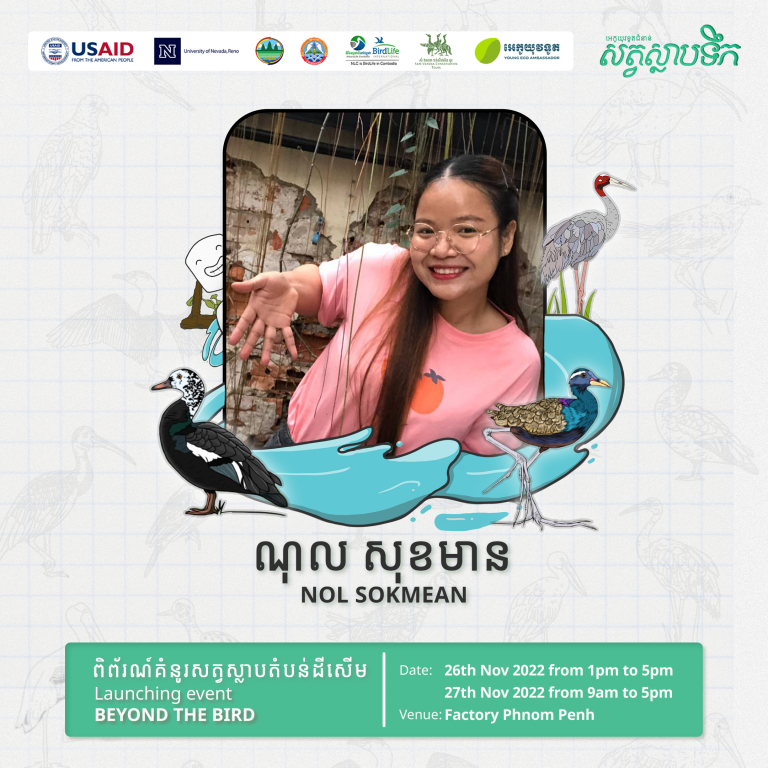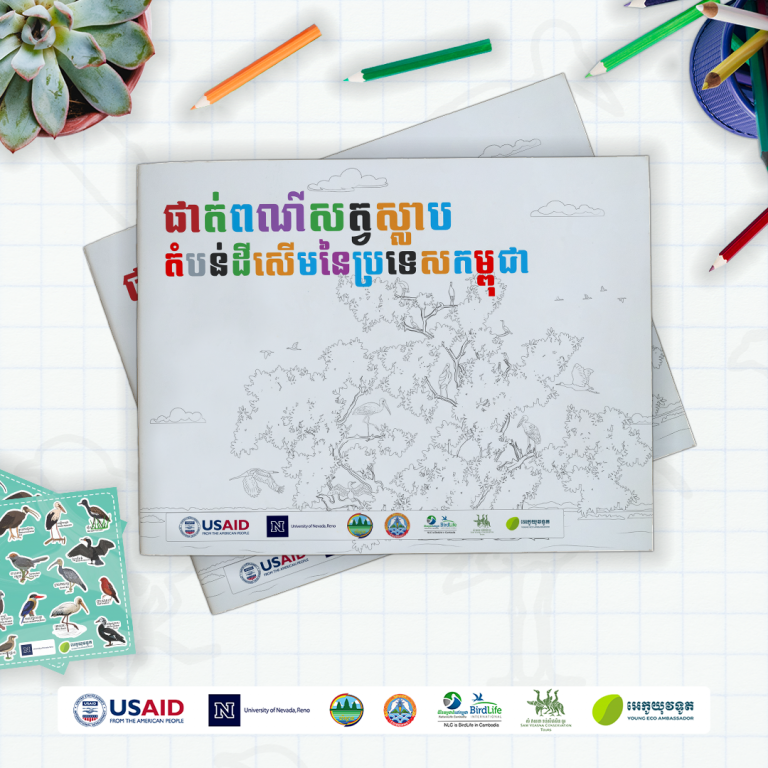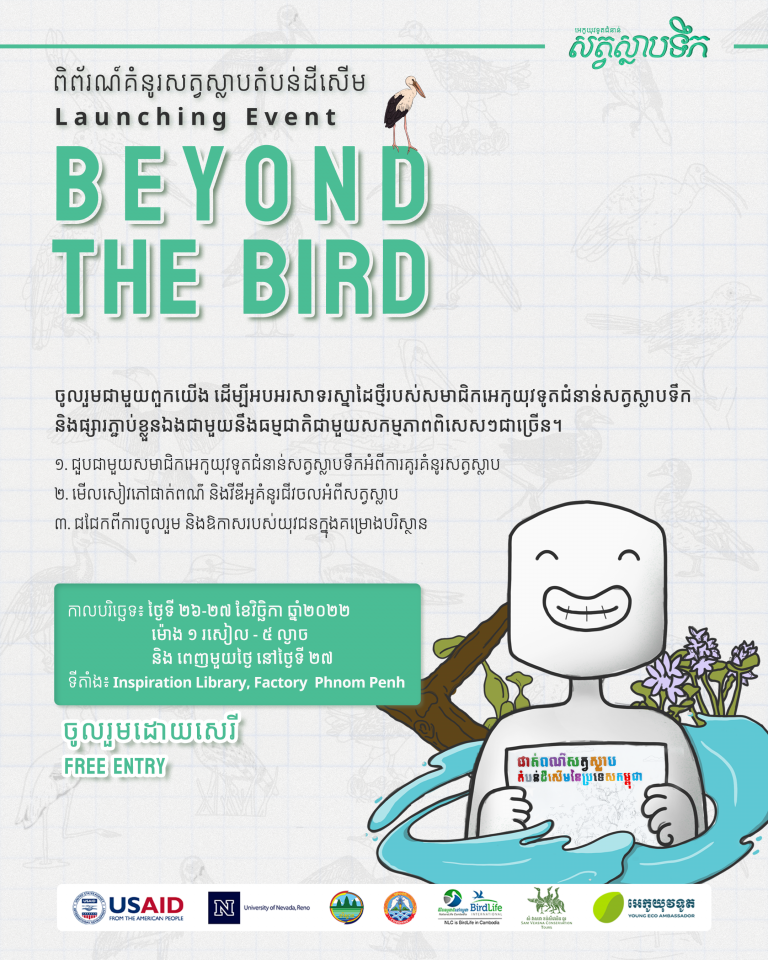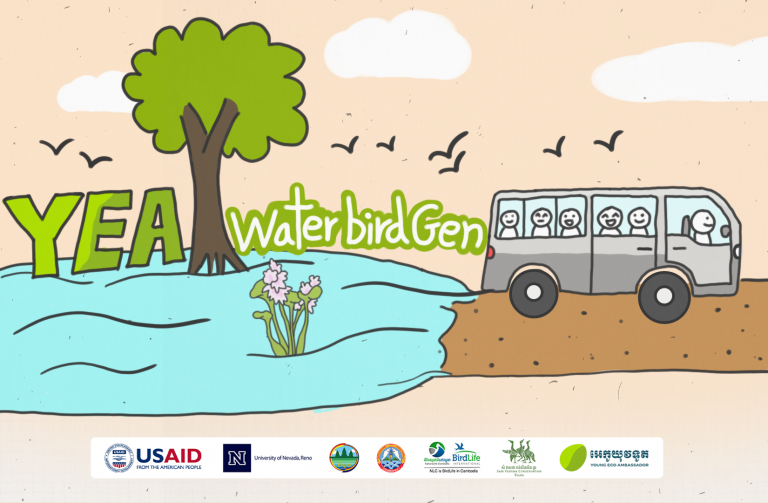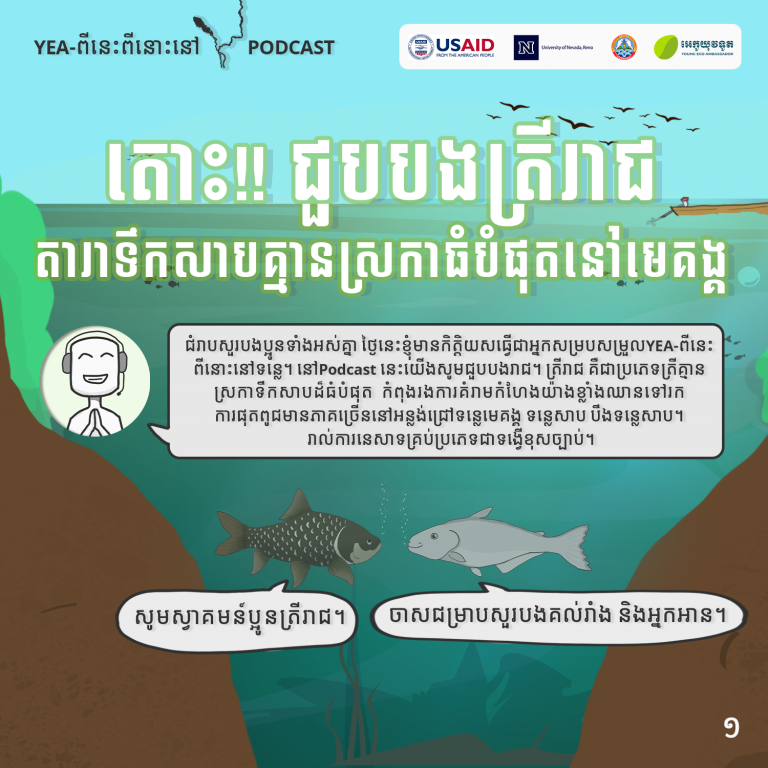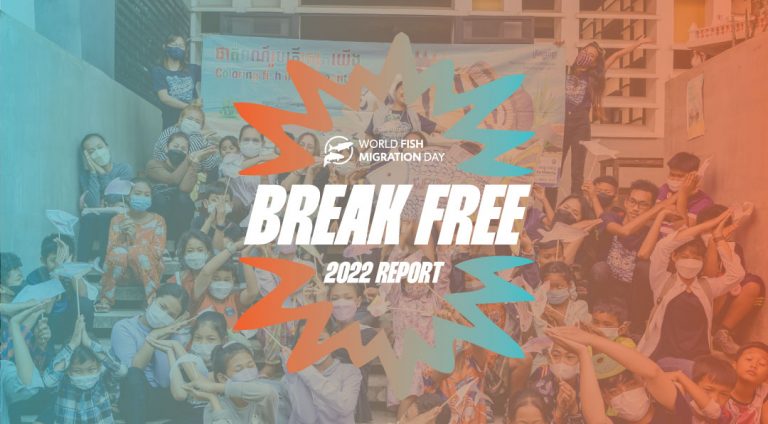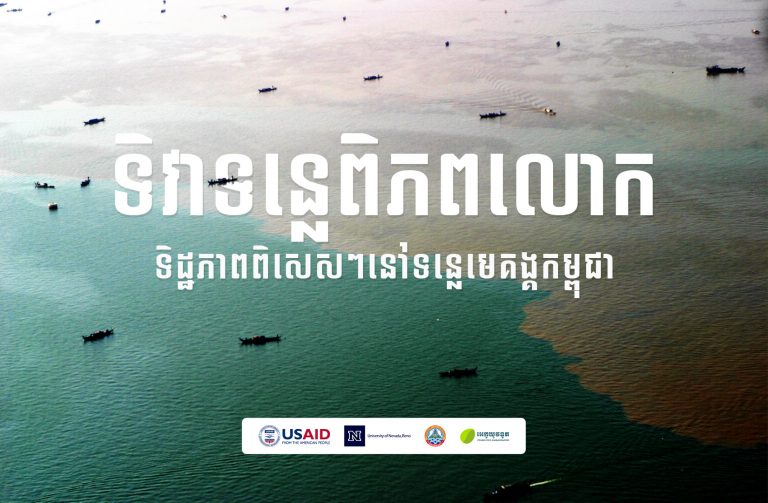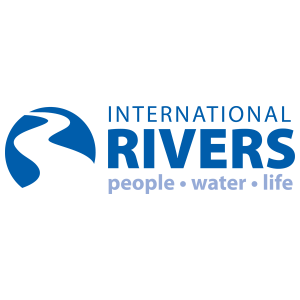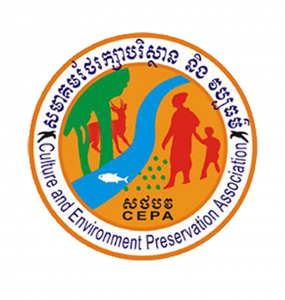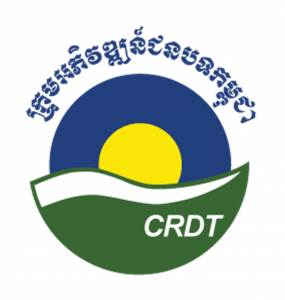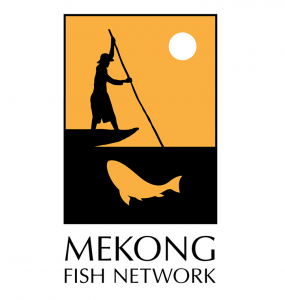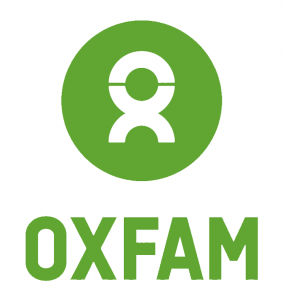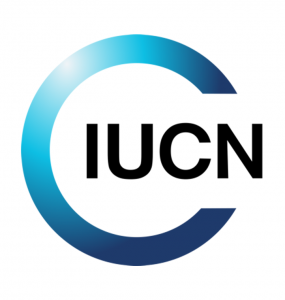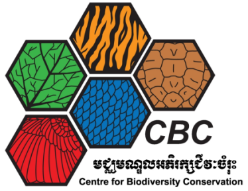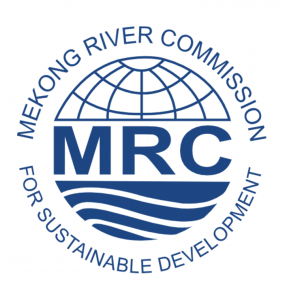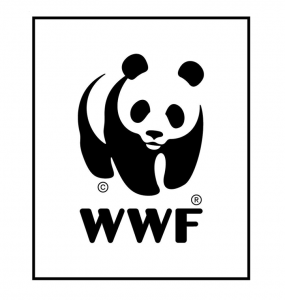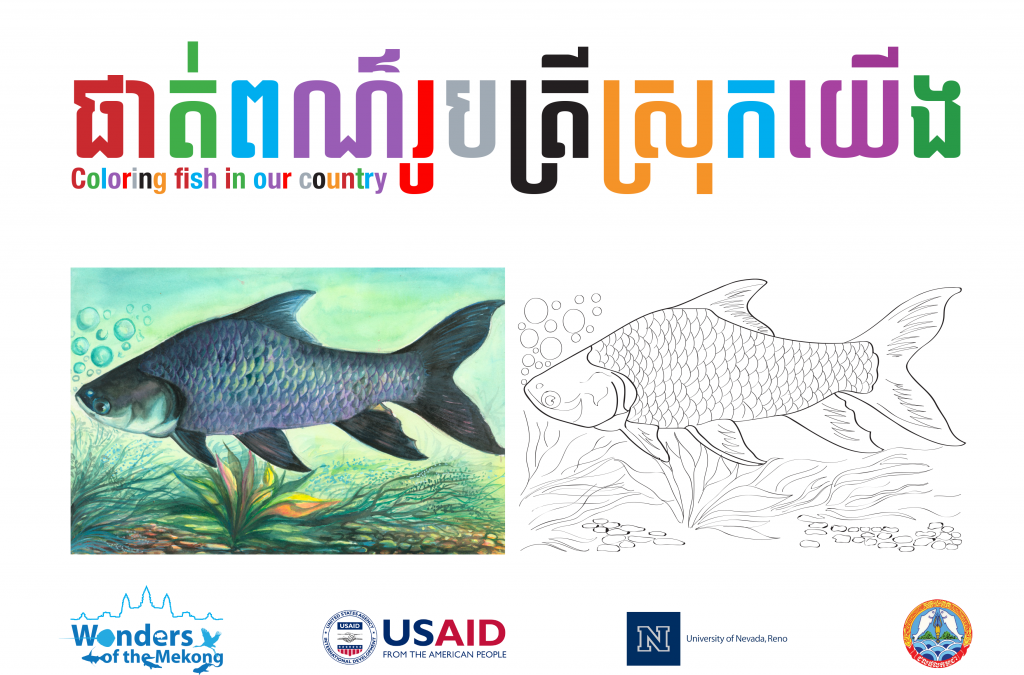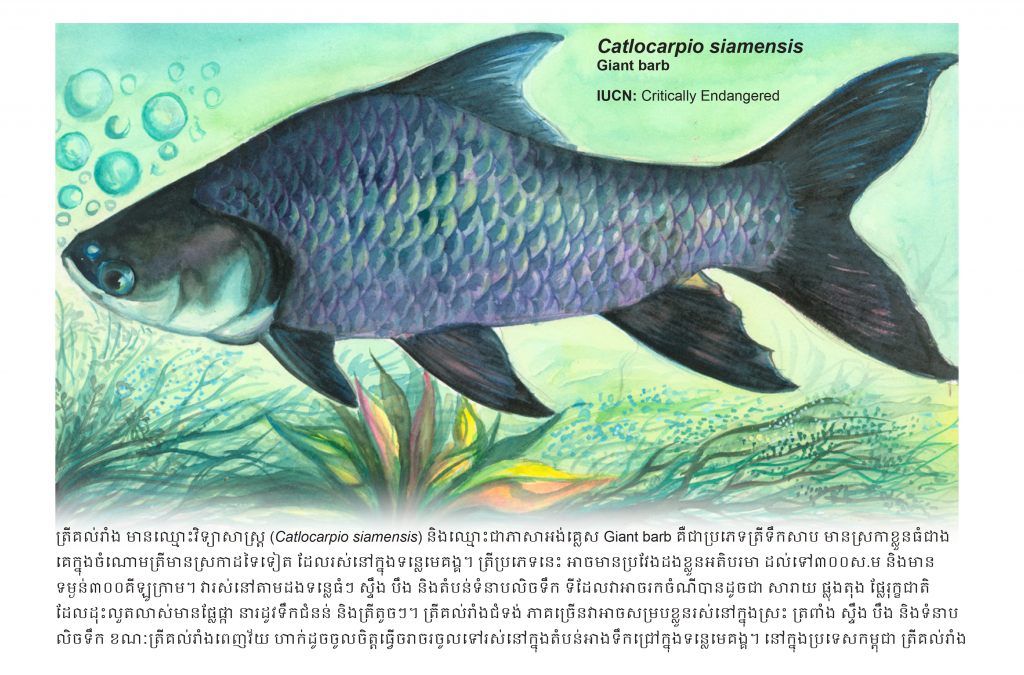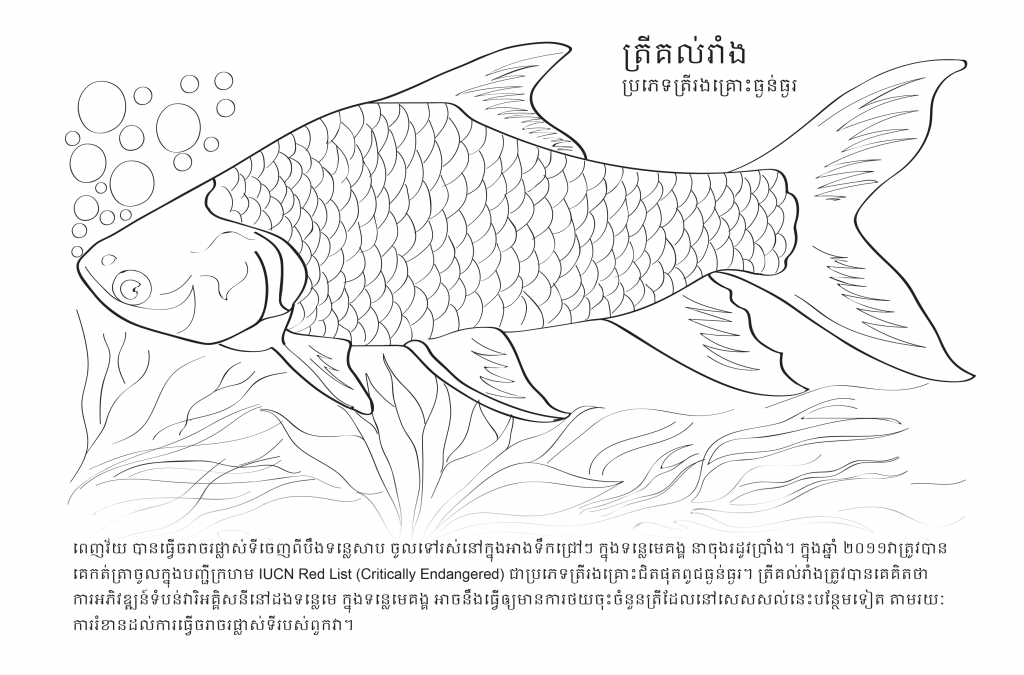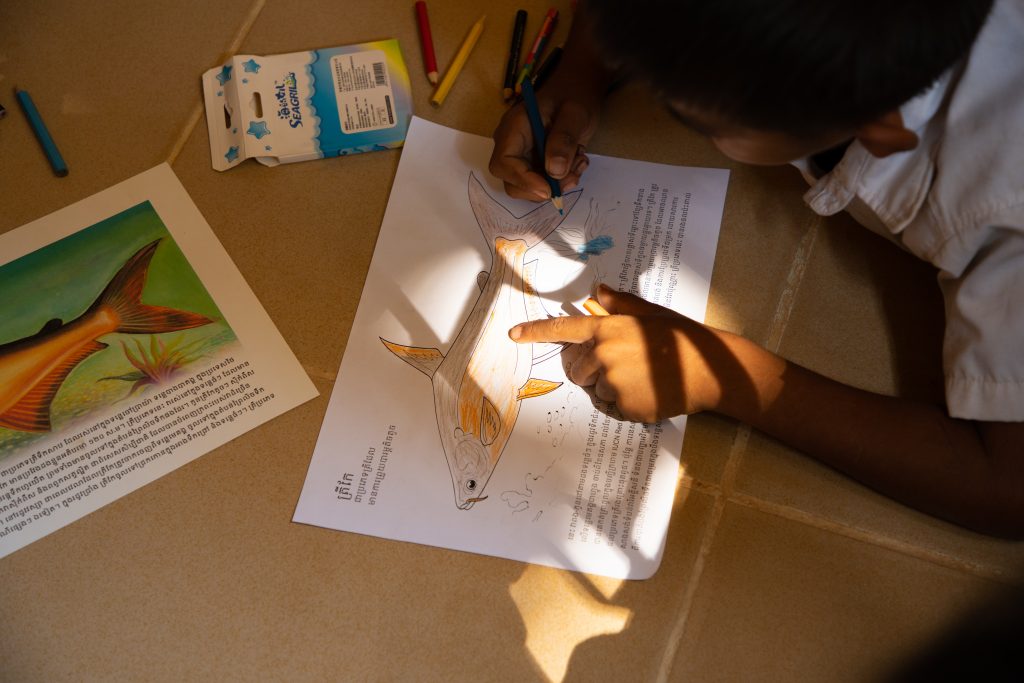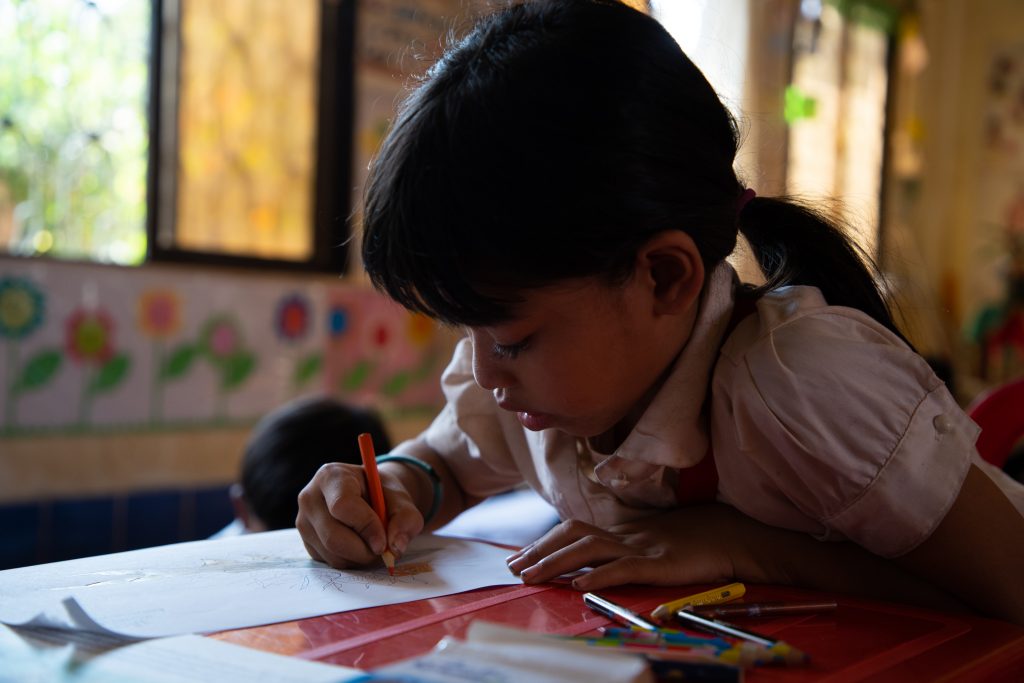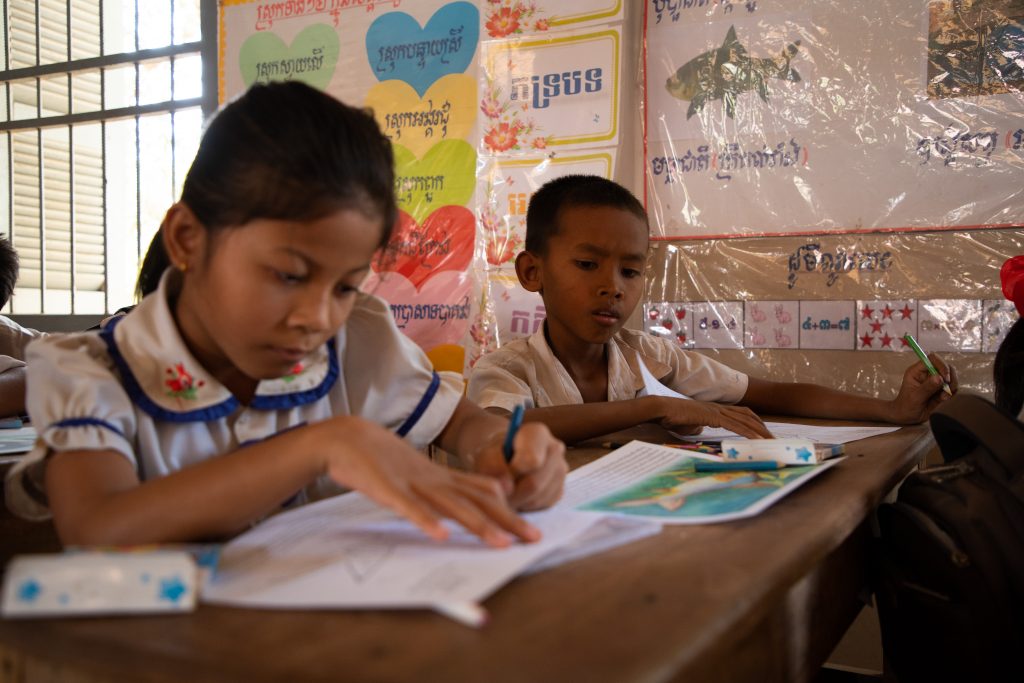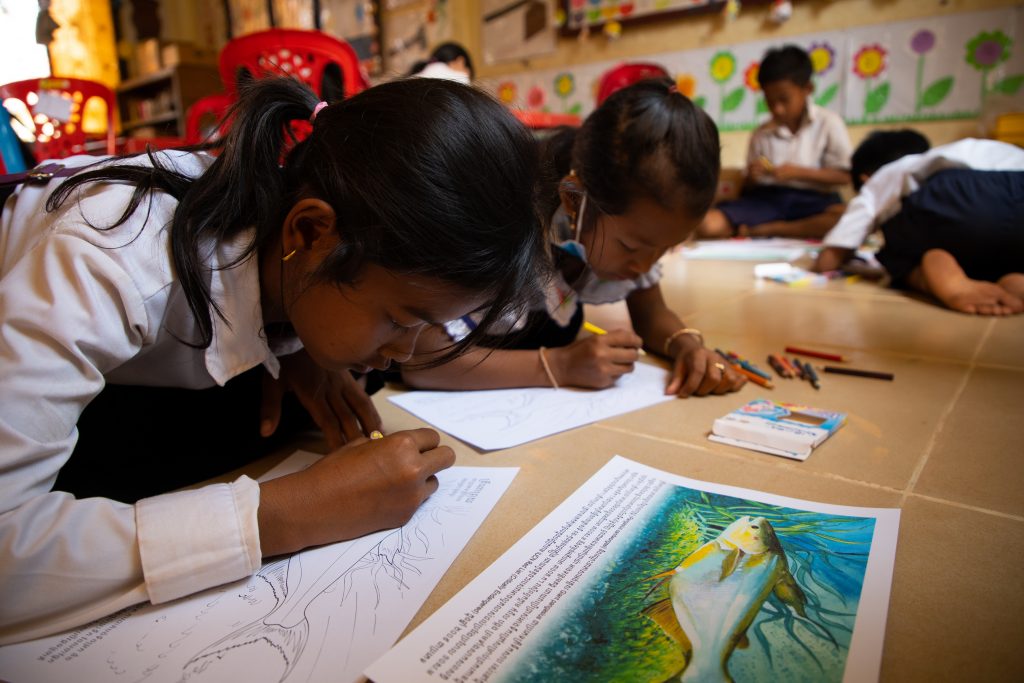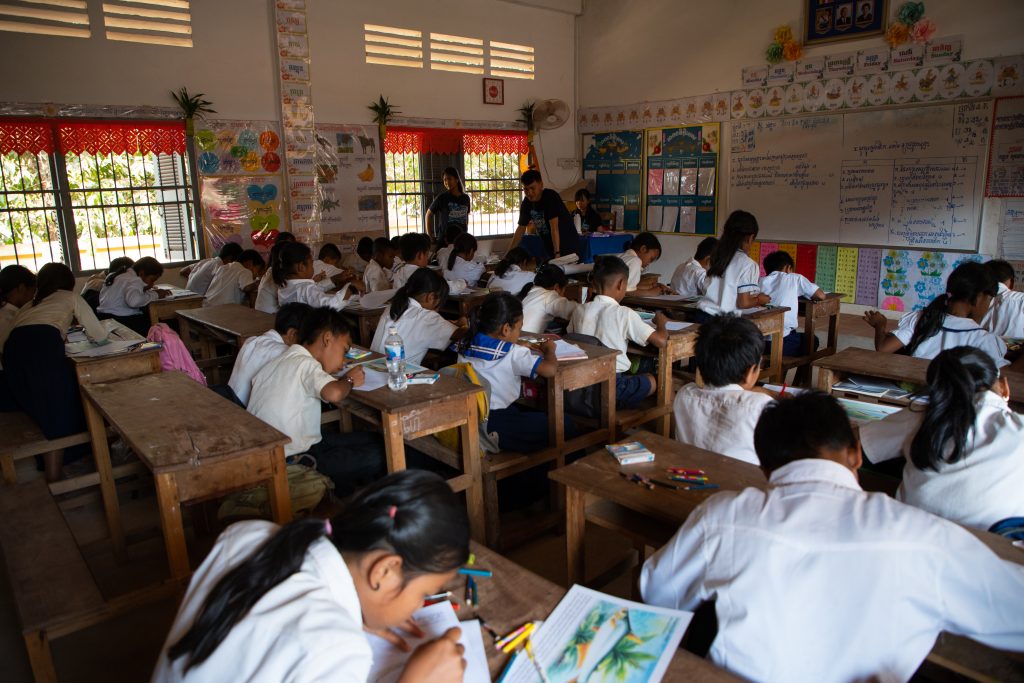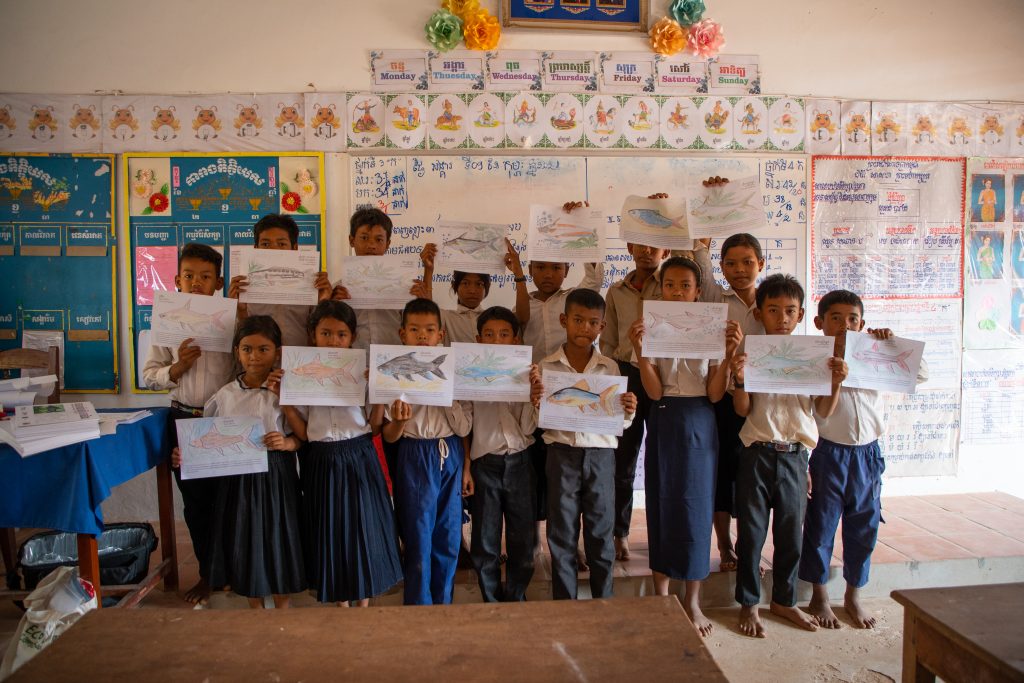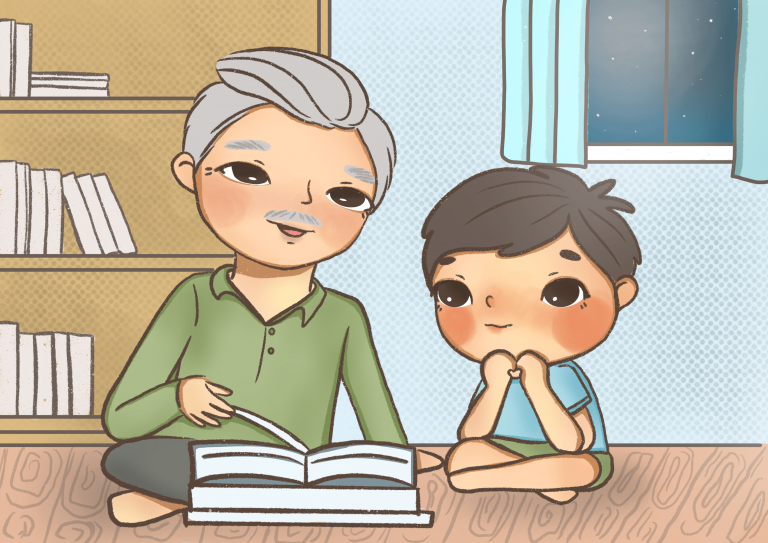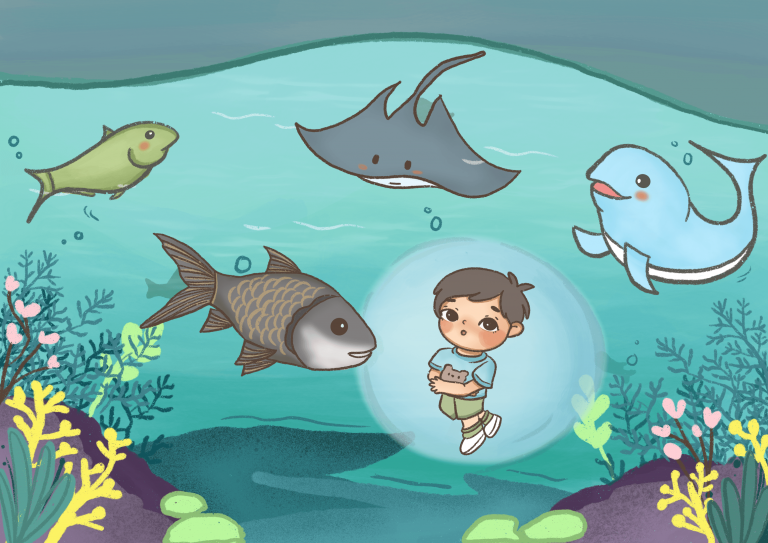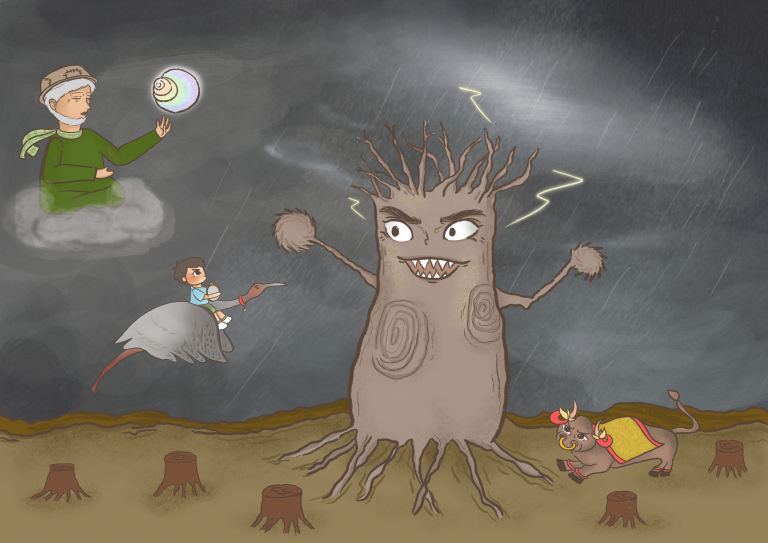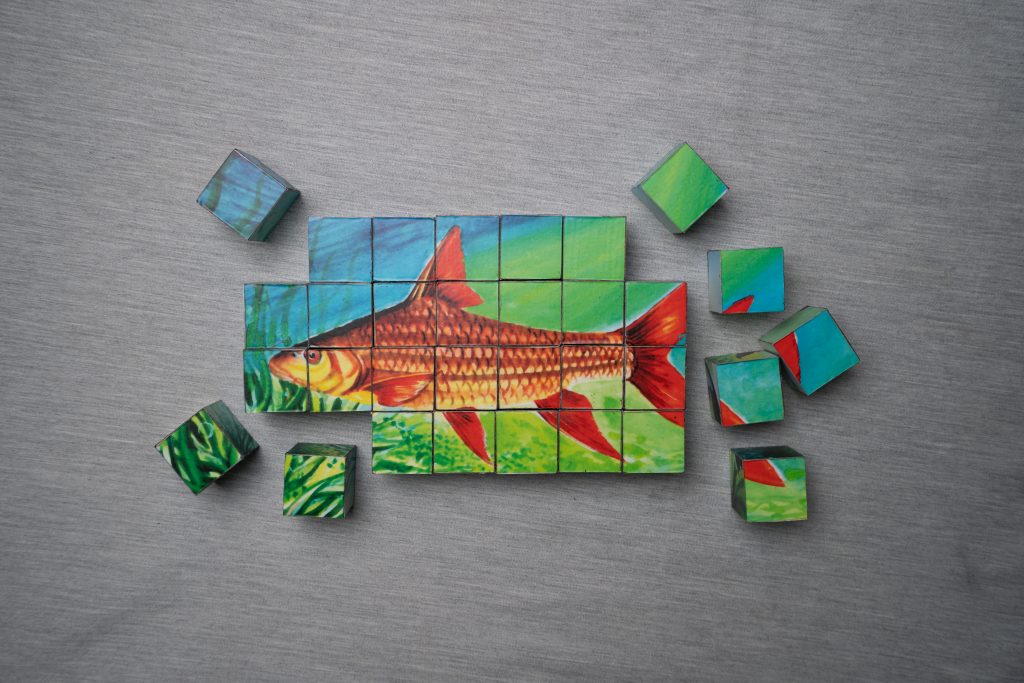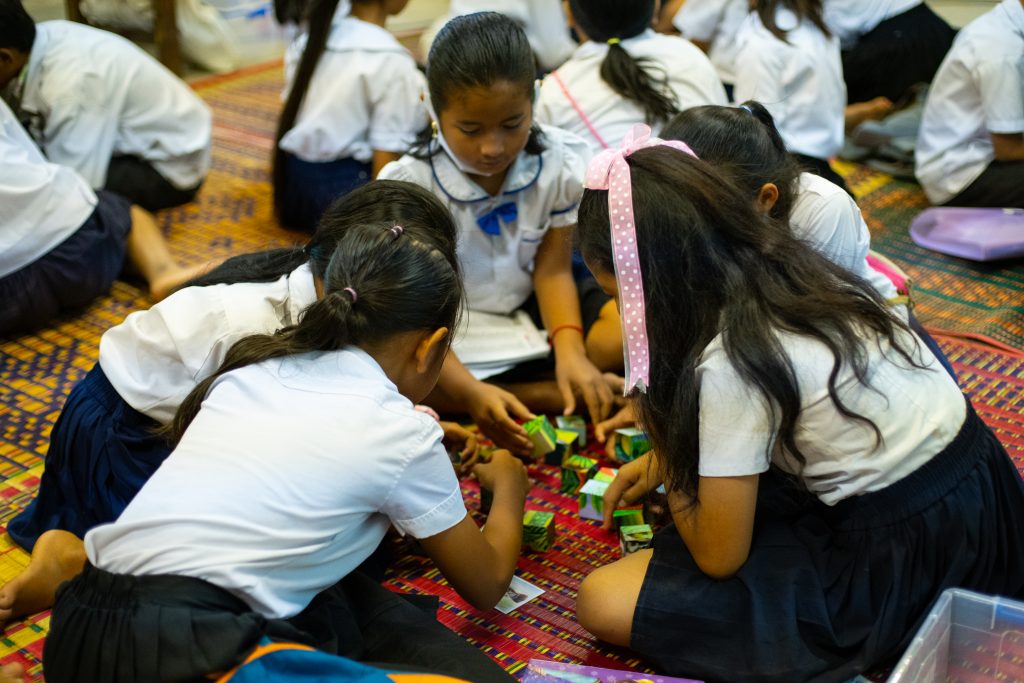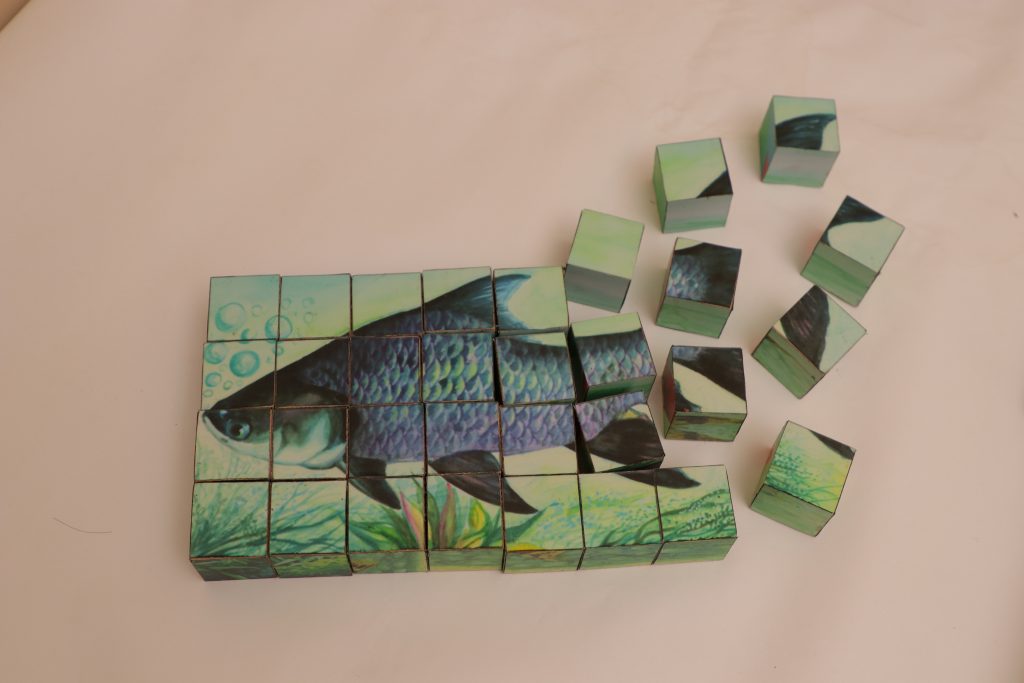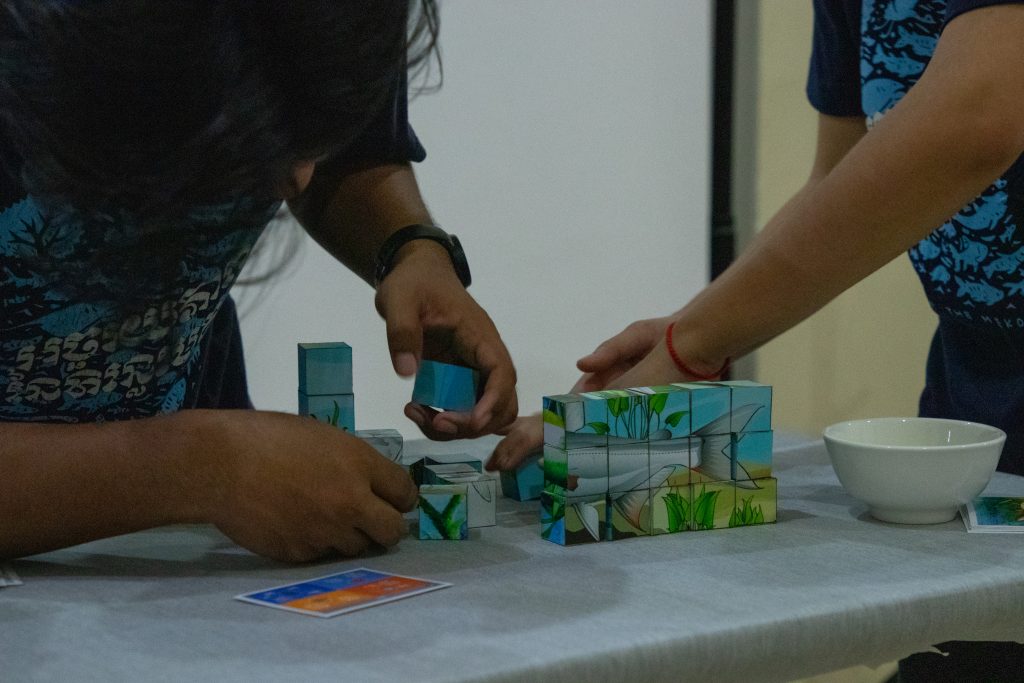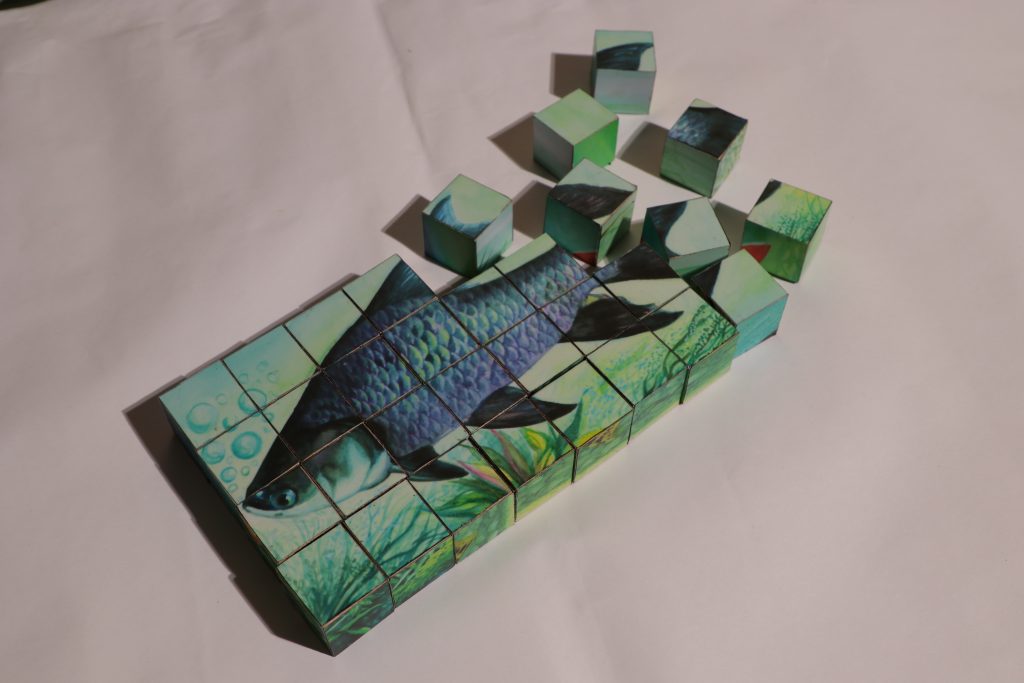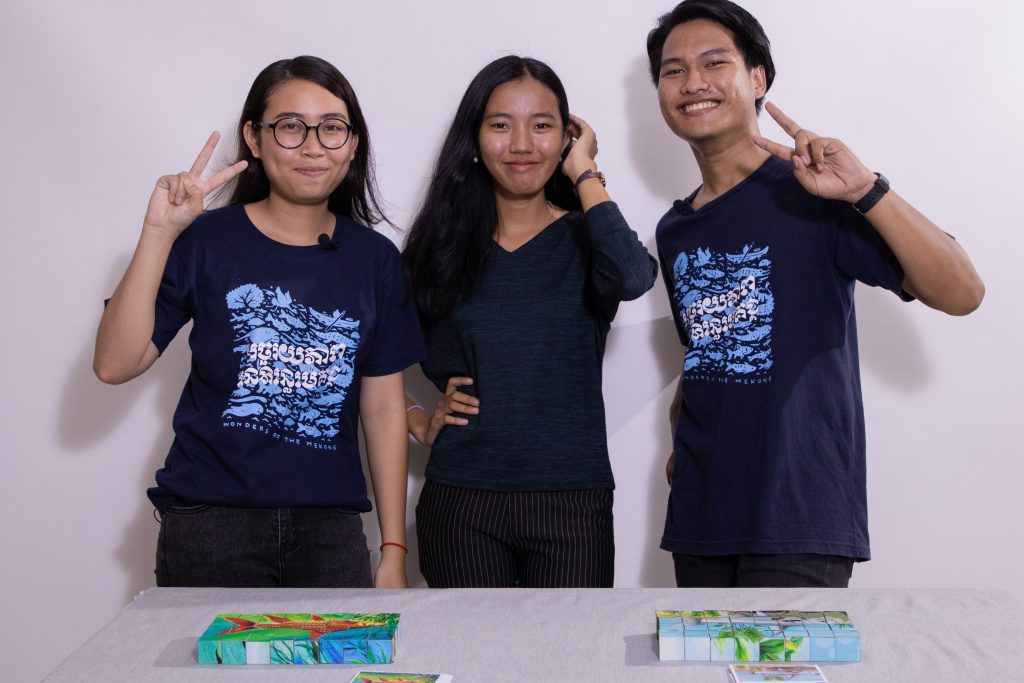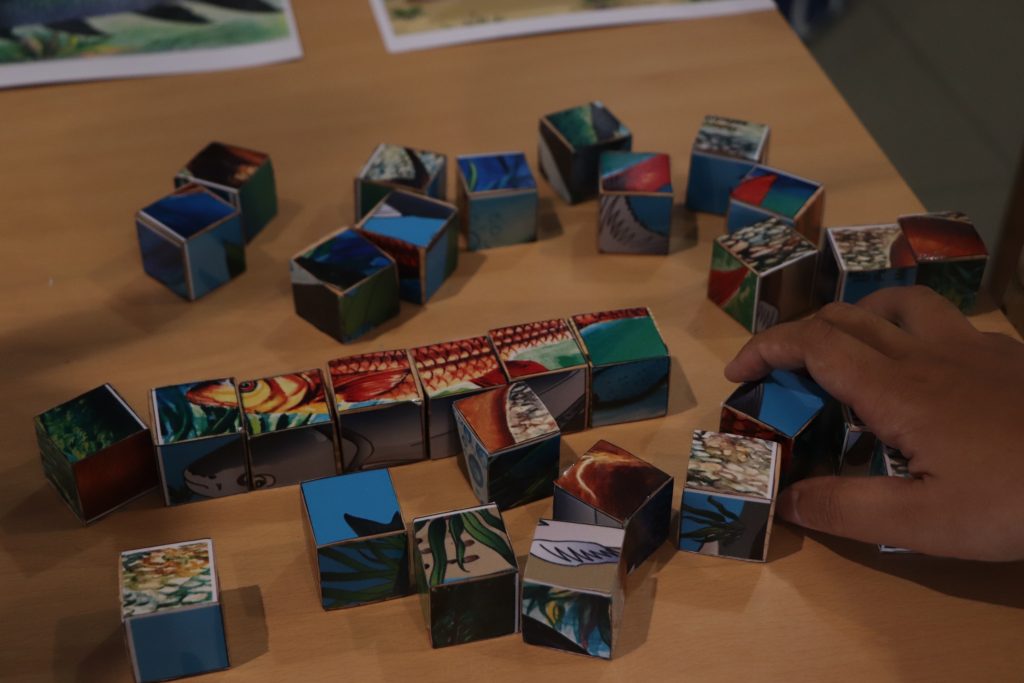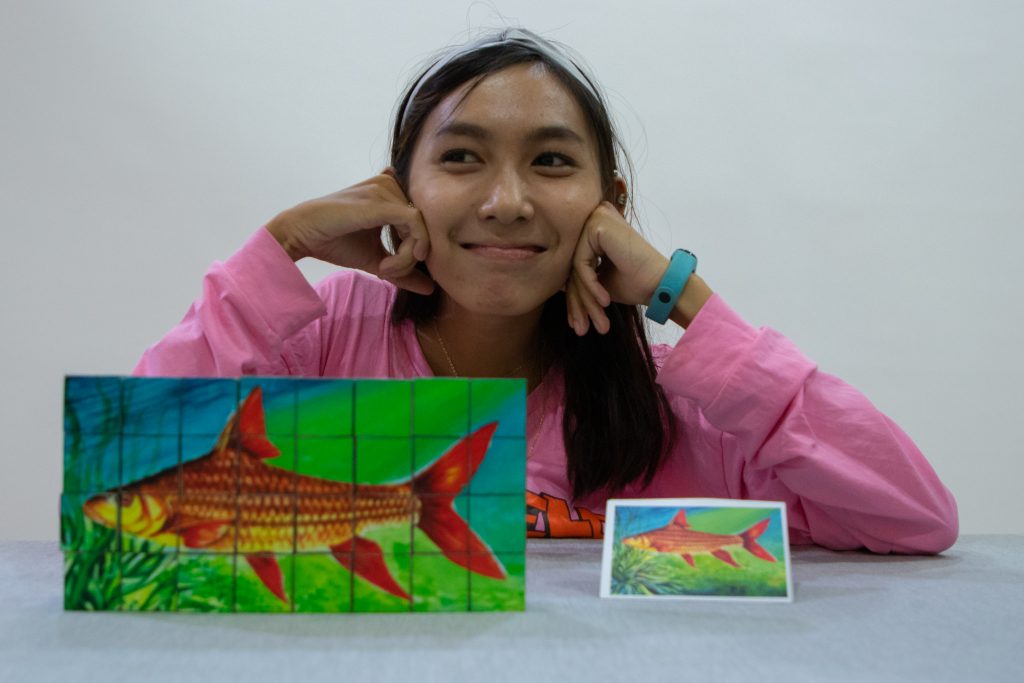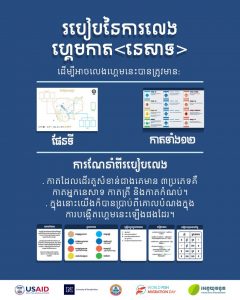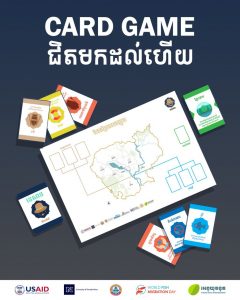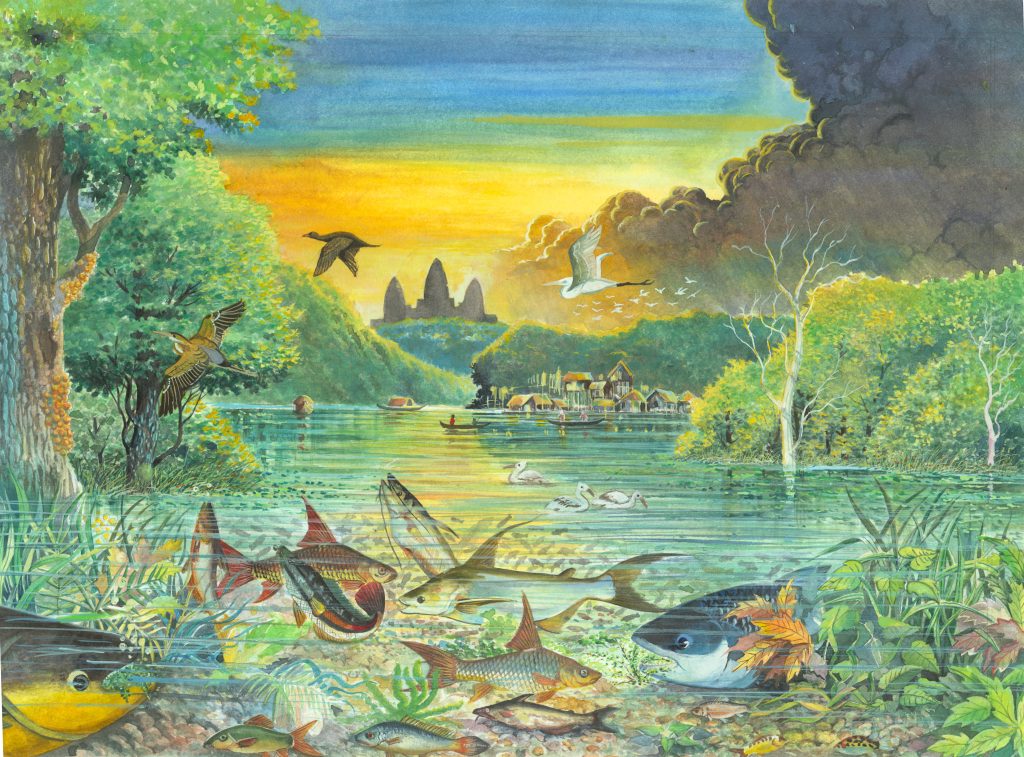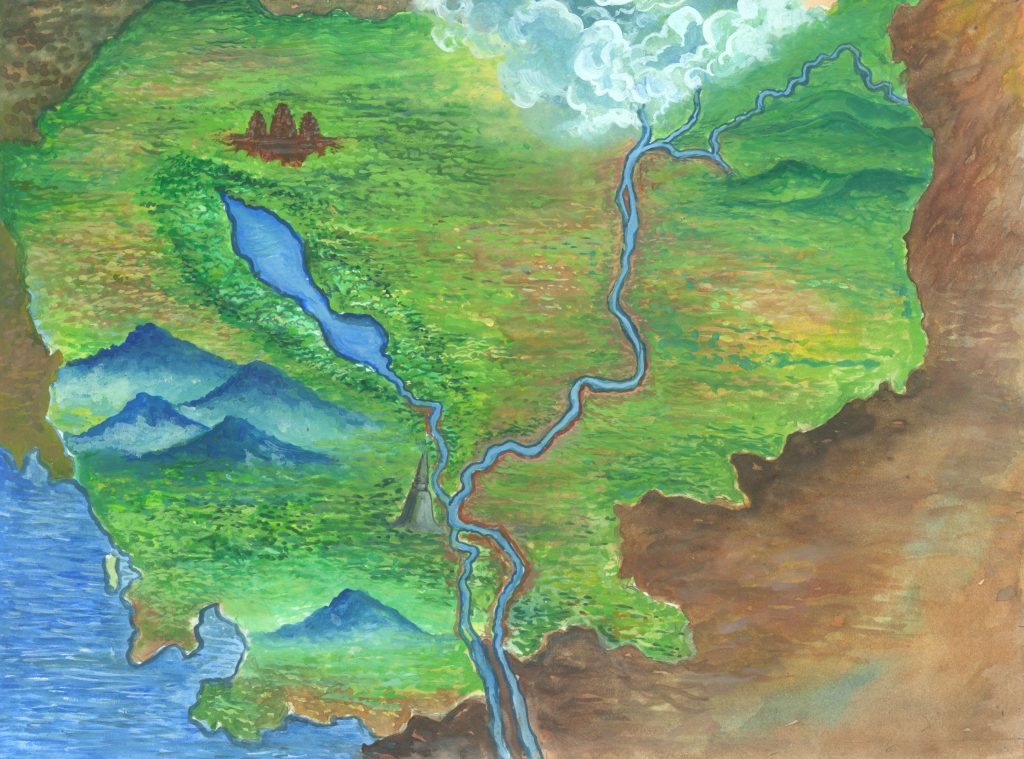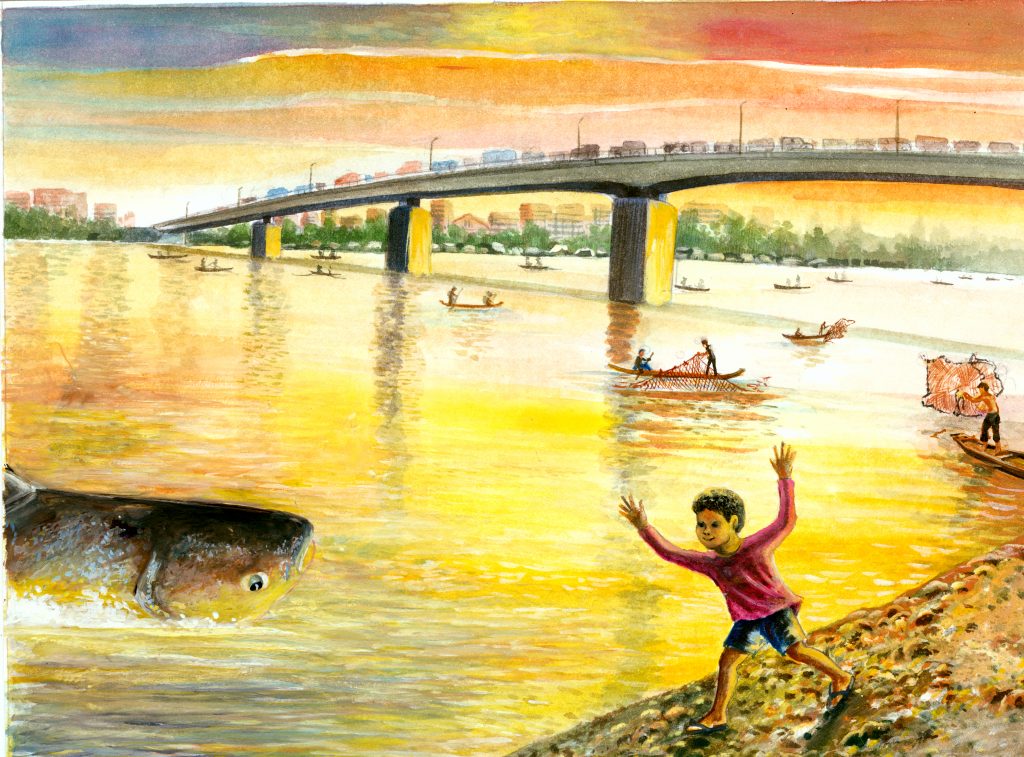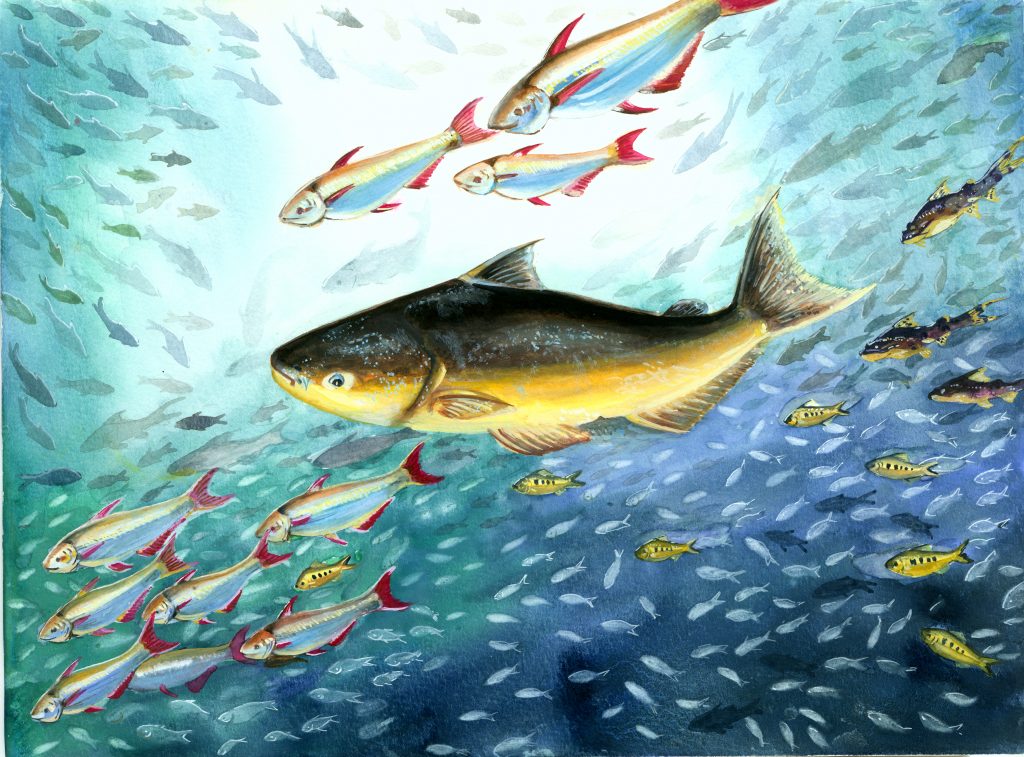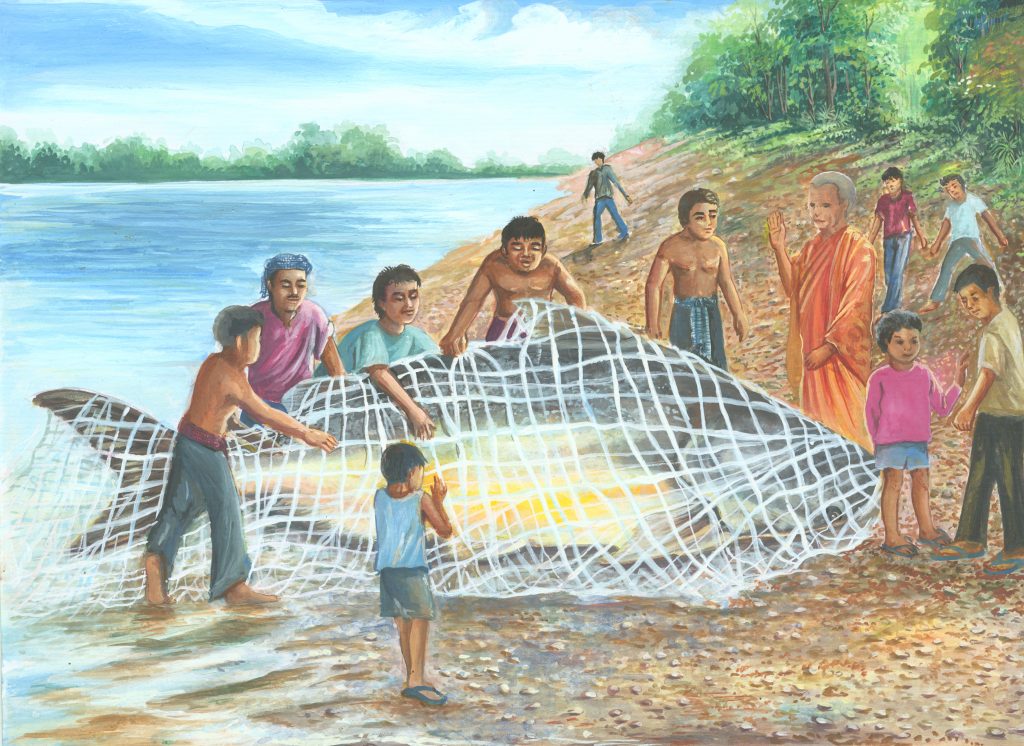Art Awareness Biodiversity Bird Cambodia Conservation Deep Pool Economy Ecotourism Endangered Species Environmental Day Celebration Fisheries Flooded Forest Forest Freshwater Law Enforcement Livelihood Mekong Generation 1 Mekong Generation 2 Mekong River Ramsar Site Research School outreach Song Storybook Tonle Sap Wetland WoM Project YEA Youth Program
- Blog and Social Media Content
- Research Paper
- Who Works on the Mekong
- Law and Regulations
- Communication Materials
Blog and Social Media Contents
Themes
Art Awareness Biodiversity Bird Cambodia Conservation Deep Pool Economy Ecotourism Endangered Species Environmental Day Celebration Fisheries Flooded Forest Forest Freshwater Law Enforcement Livelihood Mekong Generation 1 Mekong Generation 2 Mekong River Ramsar Site Research School outreach Song Storybook Tonle Sap Wetland WoM Project YEA Youth Program
Research papers
The chapters in this volume provide an in-depth look at some of the key environmental and climate change issues faced by the Mekong Region and evaluate key findings and their implications for improved policies, based on the close engagement of the project teams with local and national policymakers and other partners. This volume highlights the range and intensity of these environmental challenges as well as provides recommendations for local, national and regional policymakers, donors and other actors involved in supporting sustainable development in the Mekong Region.
Written By:
Krittasudthacheewa, C., H. Navy, B.D. Tinh, S. Voladet.
Publication Date:
August 2019
Topic : Climate policy, Geopolitics, Participation, Food, Agriculture
This report describes the biomonitoring survey conducted in the dry season of 2017 in the Lower Mekong Basin which contributes to the evaluation of the overall ecological health of the river. The objectives of the report are to (i) describe the biological indicator groups sampled during 2017; (ii) use this information to derive biological indicators for the sites examined in 2017; and (iii) use biometric indicators to evaluate these sites.
Written By:
The Mekong River Commission
(MRC)
Publication Date:
October 2019
Topic:
Ecological Health, Biological Indicator, Biological Metric
The methods used for biomonitoring can be sophisticated, producing highly accurate results, but can also be simplified for communities to use. In countries where budgets for biomonitoring are low, using community-based biomonitoring systems can effectively and cheaply tell us about a river’s health.
Written By:
Dickens, Chris; Cox, Amy; Johnston, Robyn; Davison, Supatra; Henderson, Derin; Meynell, PJ; Shinde, Victor;
Publication Date:
2018
Topic:
Mekong, Laos, River Monitoring, State of knowledge
This Report Identifies The Key Issues Around Sustainable Sediment Management In The Mekong River Basin Based On A Desk Study Review. The Study Seeks To Contribute To The Implementation Of The International Sediment Initiative (ISI) Of UNESCO’s International Hydrological Programme (IHP). It Is Also Expected That This Information Will Be Useful For Policymakers In The Region And Beyond, As Well As For External Donors To Improve The Targeting Of Support For Sediment Management Efforts In The Mekong Basin. The Study Identifies A Number Of The Key Messages On And Challenges Facing Sediment Management In The Mekong Basin.
Written By:
Piman, T., Manish, S.
Publication Date:
November 2017
Topic:
Ecosystems Food, Agriculture, Water Resources
This report explains in general terms some of the impacts of dams on fisheries and outlines some approaches to mitigation. The report aims to inform discussion on mitigation of impacts of new dams as well as to encourage mitigation of impacts caused by existing dams.
Written By :
Hortle, K.G., So Nam
Publication Date :
December 2017
Topic:
Environmental Engineering, Environmental Science, Environmental Management, Fisheries Management, Fish Biology
In order to address these challenges, the focus of this report is twofold. Firstly, to conduct a literature review on rice productivity in Cambodia to ascertain what data is already available and to identify constraints, challenges and options to increase rice productivity. Secondly, to measure actual crop water use through direct and indirect approaches on a dry season rice crop in 2012 and to calculate water productivity indices.
The literature review highlights that from the very limited data for Cambodia (and indeed for the neighbouring countries), that it lags behind its Asian neighbours both in terms of physical productivity and water productivity by up to 50%…..
Written By:
David Smith & Evan Christen
Publication Date:
November 2013
Topic: Agriculture
This study has considered the likely impacts of building dams on the Mekong, using various scenarios based upon current proposals and plans. These impacts include the likely effect of such dams on fish migration to and from their spawning grounds; the subsequent effect on breeding and therefore revised prediction of fish stocks; the potential changes to food security arising from changes to yields on capture fisheries, and lastly, the potential impacts to the diet and nutrition, focusing particularly on those who depend on fish for essential elements of their intake. Full report from: Cambodia Nutrition Community Library
Written By:
Inland Fisheries Research and Development Institute (IFReDI)
Publication Date:
November 2012
Topic:
Dam, Fish Migration, Fish Stocks, Food and Nutrient Security
The objective of this research is to provide an understanding of natural hazards in Stung Treng as well as give a broader picture of disaster risks in the north-eastern region of Cambodia in conjunction with similar vulnerability mapping projects that were carried out in 2009 in the provinces of Ratanakiri and Mondulkiri. Stung Treng is exposed to seasonal floods from the Mekong as well as severe floods from tropical storms and depressions, as identified by the Strategic National Action Plan for Disaster Risk Reduction 2008-2013 (SNAP). The province is also exposed to seasonal drought for years but prior to the research, there was little documentation on its manifestations, frequency, and impacts. Insect infestation was also not considered a major natural hazard in the province.
Written By:
Hing, P., Kathlyn,K.H. Sumaylo., Bo, S., Sras, P
Publication Date:
November 2010
Topic :
Environmental Sustainability, Decentralization, Disaster Risk Assessment, Disaster Risk Reduction and Climate Change Adaptation (DRR & CCA), North-East Cambodia
International Rivers protects rivers and defends the rights of communities that depend on them. We work with an international network of dam-affected people, grassroots organizations, environmentalists, human rights advocates and others who are committed to stopping destructive river projects and promoting better options. We seek a world where healthy rivers and the rights of local communities are valued and protected. We envision a world where water and energy needs are met without degrading nature or increasing poverty, and where people have the right to participate in decisions that affect their lives.
CEPA was established by a group of people who love the environment for natural resources preservation. Their mission is to work with all levels of organizations to improve people’s economic, social, cultural through research, information exchange and knowledge, to Improve the livelihood of people in the community and equality between men and women, to empower people in the communities to have equal right to use and manage natural resources, and to push communication channels to increase social awareness and preserve indigenous culture. For activities which related to the Mekong River are Eco-tourism project, and Sustainable River-Based Management Project.
Learn more: INTERNATIONAL RIVERS
Learn more: CEPA
Cambodia Rural Development Team is an NGO that operates in three areas of Cambodia such as Kraties, Stung Treng and Mondoulkiri which work on poverty and environmental issues. The purpose of CRDT is aimed to improve the livinghood of people in the communities through, enhancing business and protecting the environment. They worked on several projects, but work related to the Mekong River are Conservation of dolphins, Mekong water pollution, and Sustainable Livelihood Improvement for Communities along the Mekong River.
STIMSON is a center work to promote international security, prosperity and justice through research, analysis, participation and policy making. STIMSON has worked on many issues and in many places, for example in Southeast Asia. There, they work on the protection of the Mekong’s ecosystem and support local economic development, and the projects that STIMSON has undertaken are Mekong River Basin Project, Mekong River Policy Project, War Legacies Working Group, Southeast Asia Forum.
Learn more: STIMSON
MFN is a voluntary association of people with a focus on expanding their knowledge on fish, especially fish in the Mekong River. The goal is to improve the capacity of local people and institutions, to facilitate dialogue and Cross-border collaboration, and create connections to share existing knowledge. The MFN uses its website and regular newsletter to share news and fish-related project updates from other organizations working in the Lower Mekong Basin.
Learn more: CI
Learn more: MekongFishNetwork
NTFP-EP is a collaborative network of NGOs, communities and people in Asia working to strengthen the capacity of forest-dependent communities and the goal is to empower forest-based communities. Most especially NTFP-EP works in the areas of NTFPs and community livelihoods, including culture, democracy and gender equality. For the work that NTFP-EP done has AGROFORESTRY PROJECT, Honey Project, CBE / LIVELIHOOD Project, and CBET Project: a project to help people strengthen their tourism services, develop their promotional capacity, and collaborate with other tourism companies.
Oxfam is an international organization working in Cambodia to promote and protect human rights, strengthen women’s economy, build strong communities and manage responsibility natural resources. Oxfam collaborates with all levels of institutions because they believe that when civil society, the community, the private sector, the media and other stakeholders work together to foster change. The following story that Oxfam created have Mekong Champion Struggle for Sustainability of the Mekong River and Mekong River Energy Infrastructure Development.
IUCN is an international union comprising of more than 1,400 member organisations and 15,000 environmental experts. In Cambodia, IUCN is implementing various projects on water and wetlands. The Mekong WET project focuses on strengthening climate change adaptation by harnessing the benefits of wetlands in the Mekong Region. The Building River Dialogue and Governance in the Sekong, Sesan and Srepok river basins (BRIDGE 3S) project aims to establish, expand and enhance the knowledge and leadership framework to promote a shared vision for sustainable use of water resources in the Mekong Basin. A previously completed project focused on transboundary dolphin conservation between Thailand and Cambodia, and sought to improve ecotourism and diversify local livelihoods in the region.
The Centre for Biodiversity Conservation (CBC), located at Royal University of Phnom Penh (RUPP), is an academic and research body co-established by RUPP and Fauna & Flora International (FFI), Cambodia Program, in 2005. CBC’s overall goal is to strengthen conservation decision-making and action within Cambodia by providing new generation of scientists with essential skills, experience, information, resources and connections in the government, non-government and academic sectors. Up to date, CBC has successfully conducted more than 20 research related to biodiversity conservation and sustainable management in Cambodia. Other opportunistic active research consists of ecology, diversity and taxonomy of birds, fish, amphibian, reptiles, insects and other invertebrates in Cambodian Lower Mekong Basin.
The Mekong River Commission (MRC) is the only inter-governmental river basin agency for regional dialogue and cooperation in the lower Mekong river basin, established in 1995 based on the Mekong Agreement between Cambodia, Lao PDR, Thailand and Viet Nam. The organization serves as a regional platform for water diplomacy as well as a knowledge hub of water resources management for the sustainable development of the region. The MRC has built on a foundation of more than six decades of knowledge and experience in the region, starting from 1957 when it began life as the UN-founded Mekong Committee.
WWF is a world’s largest independent conservation organization. WWF was established in Cambodia in 1998, as a part of the WWF Greater Mekong Programme. Today, WWF-Cambodia is one of five Country Offices in the South East Asia region coordinating conservation efforts across Myanmar, Thailand, Lao PDR, Cambodia and Vietnam. WWF-Cambodia is working with local communities, the Royal Government at all levels, private sector, NGOs and many other conservation partners to protect biodiversity and natural resources in the Eastern Plains Landscape (EPL) in Mondulkiri and the Mekong Flooded Forest Landscape (MFF) in Kratie and Stung Treng, home to many globally endangered species. WWF’s mission in Cambodia is to ensure that there will be strong participation and support from all people to conserve the country’s rich biological diversity. WWF-Cambodia envisions Cambodia’s river, forests and wildlife are conserved for all.
International Rivers protects rivers and defends the rights of communities that depend on them. We work with an international network of dam-affected people, grassroots organizations, environmentalists, human rights advocates and others who are committed to stopping destructive river projects and promoting better options. We seek a world where healthy rivers and the rights of local communities are valued and protected. We envision a world where water and energy needs are met without degrading nature or increasing poverty, and where people have the right to participate in decisions that affect their lives.
CEPA was established by a group of people who love the environment for natural resources preservation. Their mission is to work with all levels of organizations to improve people’s economic, social, cultural through research, information exchange and knowledge, to Improve the livelihood of people in the community and equality between men and women, to empower people in the communities to have equal right to use and manage natural resources, and to push communication channels to increase social awareness and preserve indigenous culture. For activities which related to the Mekong River are Eco-tourism project, and Sustainable River-Based Management Project.
Learn more: INTERNATIONAL RIVERS
Learn more: CEPA
Cambodia Rural Development Team is an NGO that operates in three areas of Cambodia such as Kraties, Stung Treng and Mondoulkiri which work on poverty and environmental issues. The purpose of CRDT is aimed to improve the livinghood of people in the communities through, enhancing business and protecting the environment. They worked on several projects, but work related to the Mekong River are Conservation of dolphins, Mekong water pollution, and Sustainable Livelihood Improvement for Communities along the Mekong River.
STIMSON is a center work to promote international security, prosperity and justice through research, analysis, participation and policy making. STIMSON has worked on many issues and in many places, for example in Southeast Asia. There, they work on the protection of the Mekong’s ecosystem and support local economic development, and the projects that STIMSON has undertaken are Mekong River Basin Project, Mekong River Policy Project, War Legacies Working Group, Southeast Asia Forum.
Learn more: CEPA
Conservation International is an international organization that works wherever nature is destroyed. In Cambodia, CI works to preserve nature for the benefit of people. For the work that CI have done Women’s Fish Processing Project, Forest management, Biodiversity Research, and Ecotourism support.
MFN is a voluntary association of people with a focus on expanding their knowledge on fish, especially fish in the Mekong River. The goal is to improve the capacity of local people and institutions, to facilitate dialogue and Cross-border collaboration, and create connections to share existing knowledge. The MFN uses its website and regular newsletter to share news and fish-related project updates from other organizations working in the Lower Mekong Basin.
Learn more: CONSERVATION INTERNATIONAL
Learn more: MekongFishNetwork
NTFP-EP is a collaborative network of NGOs, communities and people in Asia working to strengthen the capacity of forest-dependent communities and the goal is to empower forest-based communities. Most especially NTFP-EP works in the areas of NTFPs and community livelihoods, including culture, democracy and gender equality. For the work that NTFP-EP done has AGROFORESTRY PROJECT, Honey Project, CBE / LIVELIHOOD Project, and CBET Project: a project to help people strengthen their tourism services, develop their promotional capacity, and collaborate with other tourism companies.
Oxfam is an international organization working in Cambodia to promote and protect human rights, strengthen women’s economy, build strong communities and manage responsibility natural resources. Oxfam collaborates with all levels of institutions because they believe that when civil society, the community, the private sector, the media and other stakeholders work together to foster change. The following story that Oxfam created have Mekong Champion Struggle for Sustainability of the Mekong River and Mekong River Energy Infrastructure Development.
IUCN is an international union comprising of more than 1,400 member organisations and 15,000 environmental experts. In Cambodia, IUCN is implementing various projects on water and wetlands. The Mekong WET project focuses on strengthening climate change adaptation by harnessing the benefits of wetlands in the Mekong Region. The Building River Dialogue and Governance in the Sekong, Sesan and Srepok river basins (BRIDGE 3S) project aims to establish, expand and enhance the knowledge and leadership framework to promote a shared vision for sustainable use of water resources in the Mekong Basin. A previously completed project focused on transboundary dolphin conservation between Thailand and Cambodia, and sought to improve ecotourism and diversify local livelihoods in the region.
The Centre for Biodiversity Conservation (CBC), located at Royal University of Phnom Penh (RUPP), is an academic and research body co-established by RUPP and Fauna & Flora International (FFI), Cambodia Program, in 2005. CBC’s overall goal is to strengthen conservation decision-making and action within Cambodia by providing new generation of scientists with essential skills, experience, information, resources and connections in the government, non-government and academic sectors. Up to date, CBC has successfully conducted more than 20 research related to biodiversity conservation and sustainable management in Cambodia. Other opportunistic active research consists of ecology, diversity and taxonomy of birds, fish, amphibian, reptiles, insects and other invertebrates in Cambodian Lower Mekong Basin.
The Mekong River Commission (MRC) is the only inter-governmental river basin agency for regional dialogue and cooperation in the lower Mekong river basin, established in 1995 based on the Mekong Agreement between Cambodia, Lao PDR, Thailand and Viet Nam. The organization serves as a regional platform for water diplomacy as well as a knowledge hub of water resources management for the sustainable development of the region. The MRC has built on a foundation of more than six decades of knowledge and experience in the region, starting from 1957 when it began life as the UN-founded Mekong Committee.
WWF is a world’s largest independent conservation organization. WWF was established in Cambodia in 1998, as a part of the WWF Greater Mekong Programme. Today, WWF-Cambodia is one of five Country Offices in the South East Asia region coordinating conservation efforts across Myanmar, Thailand, Lao PDR, Cambodia and Vietnam. WWF-Cambodia is working with local communities, the Royal Government at all levels, private sector, NGOs and many other conservation partners to protect biodiversity and natural resources in the Eastern Plains Landscape (EPL) in Mondulkiri and the Mekong Flooded Forest Landscape (MFF) in Kratie and Stung Treng, home to many globally endangered species. WWF’s mission in Cambodia is to ensure that there will be strong participation and support from all people to conserve the country’s rich biological diversity. WWF-Cambodia envisions Cambodia’s river, forests and wildlife are conserved for all.
Laws and regulations
Sub-decree No. 1006 oon the establishment of rearrange the responsibility and protected Irrawaddy Dolphin’s habitat-kh
This sub-decree was issued by the Royal Government of Cambodia with the decision of rearrange the responsibility and Protected Irrawaddy Dolphin’s habitat.
Sub-decree No. 155 on the establishment of creating the controlling areas and protected areas for Irrawaddy Dolphin-kh
This sub-decree was issued by the Royal Government of Cambodia with the decision of creating the controlling areas and protected areas for Irrawaddy Dolphin which is a natural biodiversity for ecotourism purpose and sustainable conservation.
Sub-Decree No. 235 on the management of drainage system and wastewater treatment system-kh
This sub-decree was issued by the Royal Government of Cambodia with the decision of improvement of drainage system and wastewater treatment system.
Sub-decree No. 174 on the establishment of Boeung Lomkod Protected Landscape-kh
This sub-decree was issued by the Royal Government of Cambodia with the decision to ensure the environmental protection, ecosystem conservation and sustainable use of natural resources.
Sub-Decree No. 168 on the management of plastic bags-kh
This sub-decree was issued by the Royal Government of Cambodia with the decision of increase effectiveness of plastic reduction on importation, production, distribution and the use of plastic bag in order to improve the public health, environment and landscape.
COMMUNICATION MATERIALS
Mekong River visual communication materials were developed in order to assist in the teaching and learning process to raise awareness and promote the connection between the Mekong River and the People. Different institutions and organizations’ work is featured here. Let’s enjoy learning and have fun!
These Communication materials are for “Educational Purpose” only. To use the communication materials, please contact Young Eco Ambassador Cambodia via email: youngecoambassador.kh@gmail.com
DIGITAL ARTWORK FROM ARTISTS OF THE MEKONG By YEA: Mekong Generation 1
The digital artworks from Mekong River Artists is a project created to encourage the public to learn more and increase the understanding of the endangered species, importance, and beauty of each species present along the Mekong River, where some species are threatened and endangered.
Learning through art will help children and young people to easily remember the appearance and key features of all these species. In addition, this is also an opportunity to show the great relationship between “art and nature”, as well as to contribute to the support and appreciation of as well as to appreciate the work of young Cambodian artists.
Digital Artwork of Mekong artists have been featured in exhibitions, social media’s post, and production of shirts and stickers for environmental and the Mekong River awareness and public outreach since 2019. Click here to download.
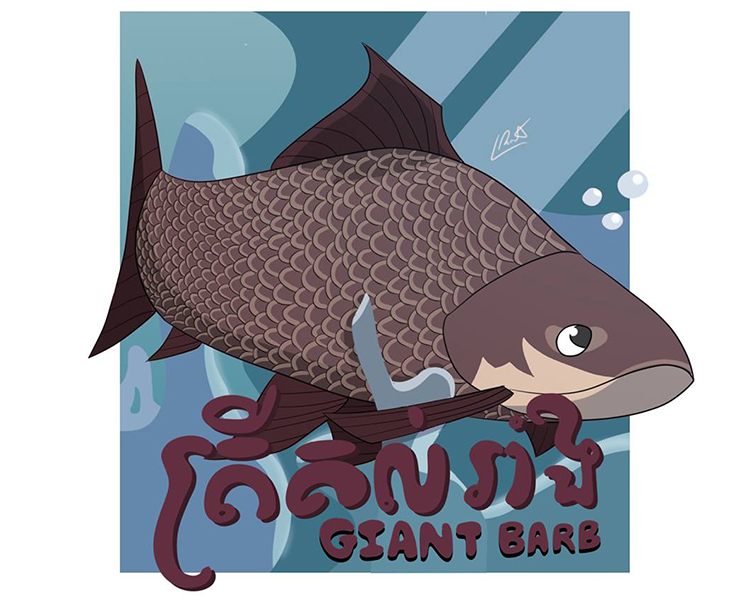
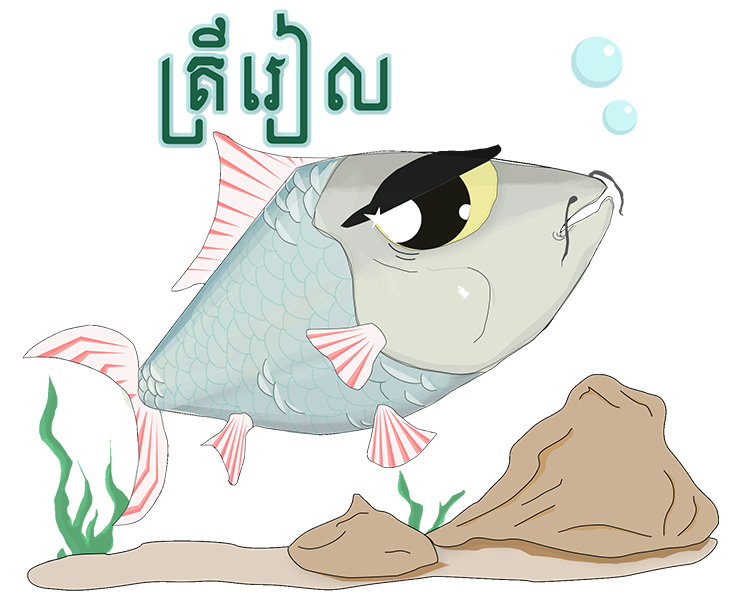
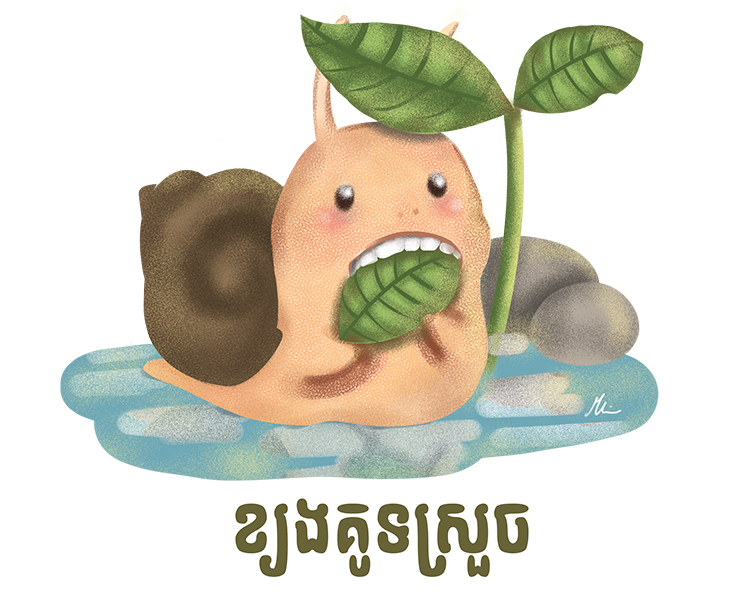
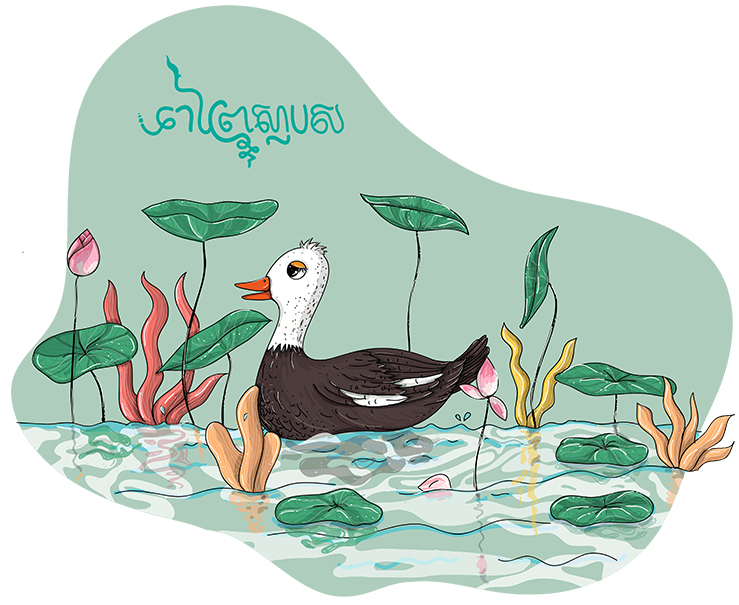
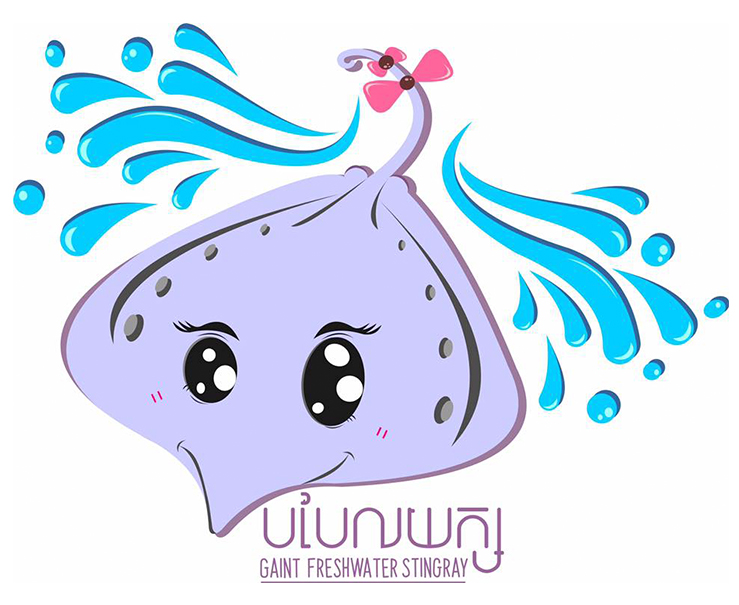
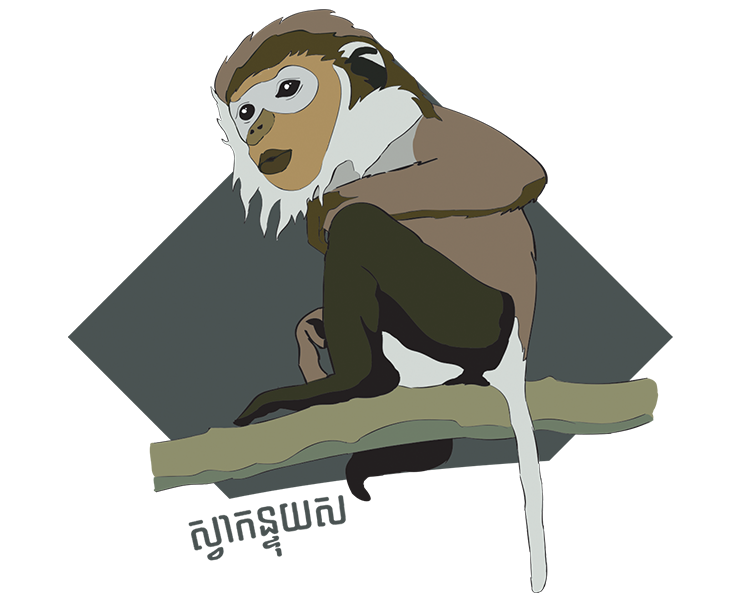
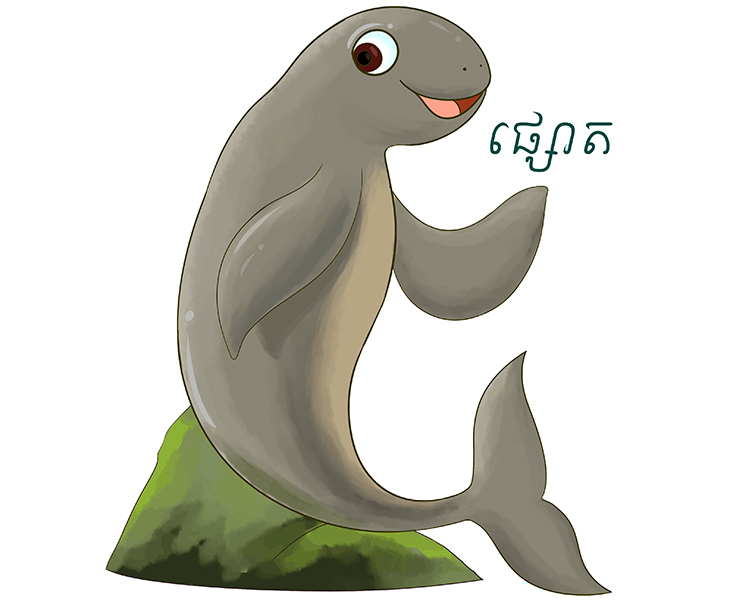
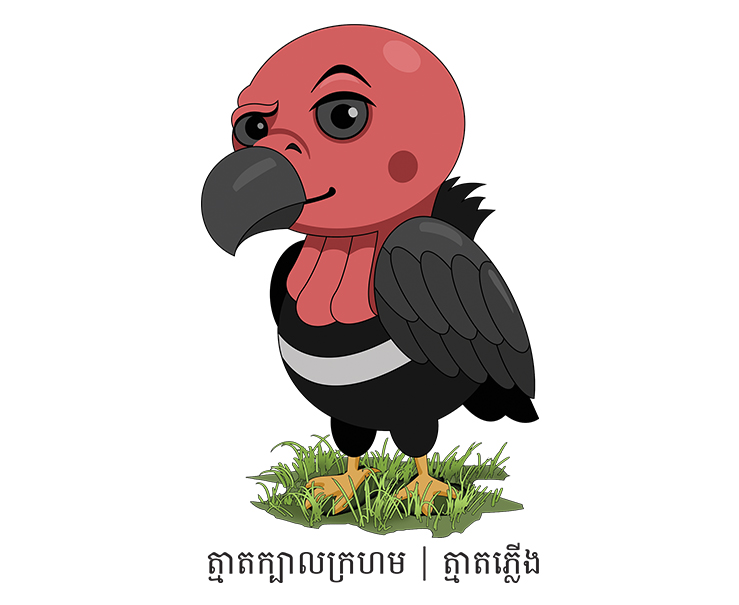
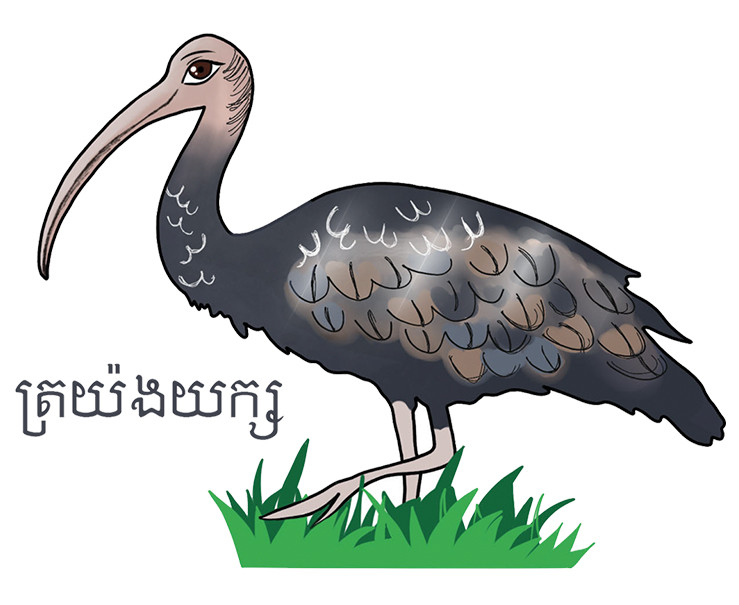
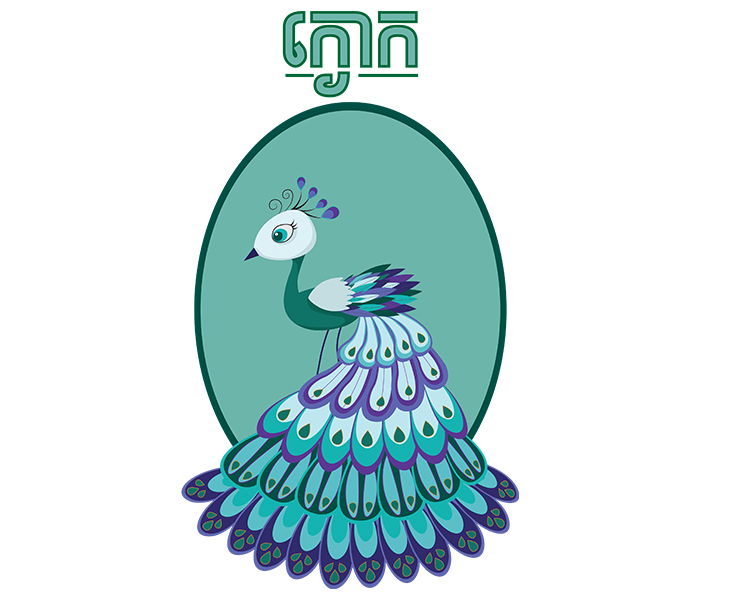

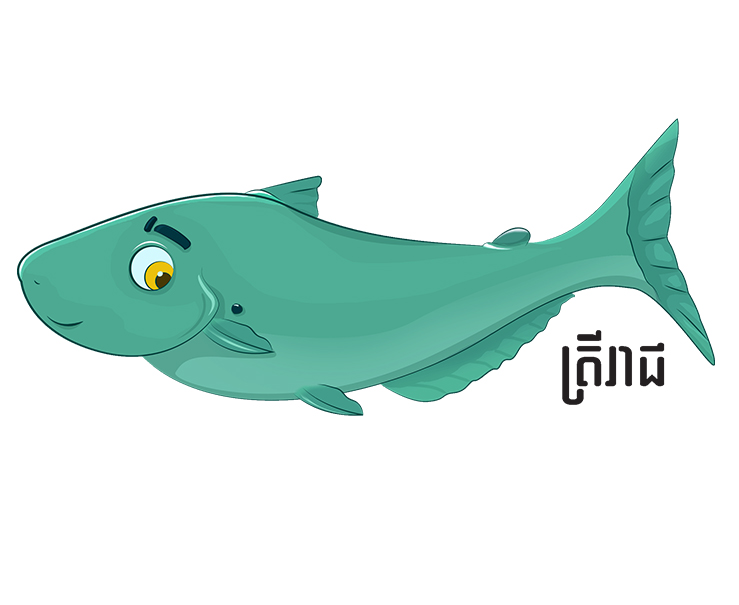
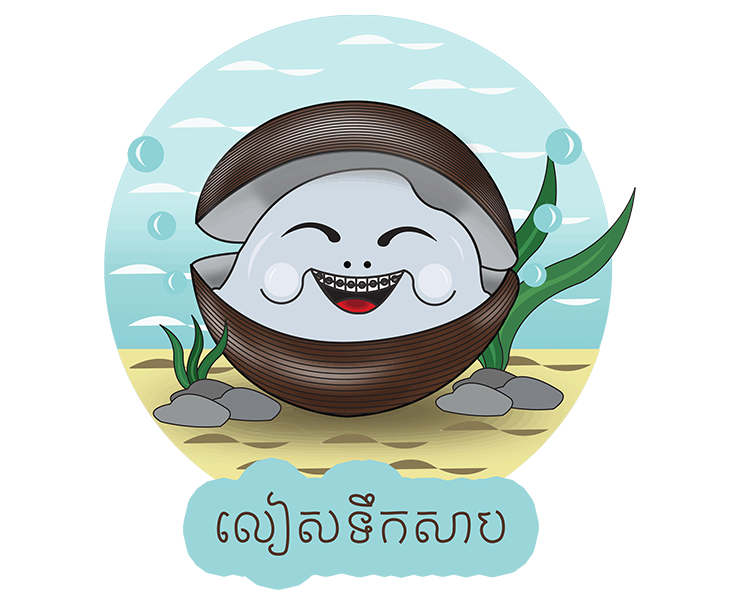
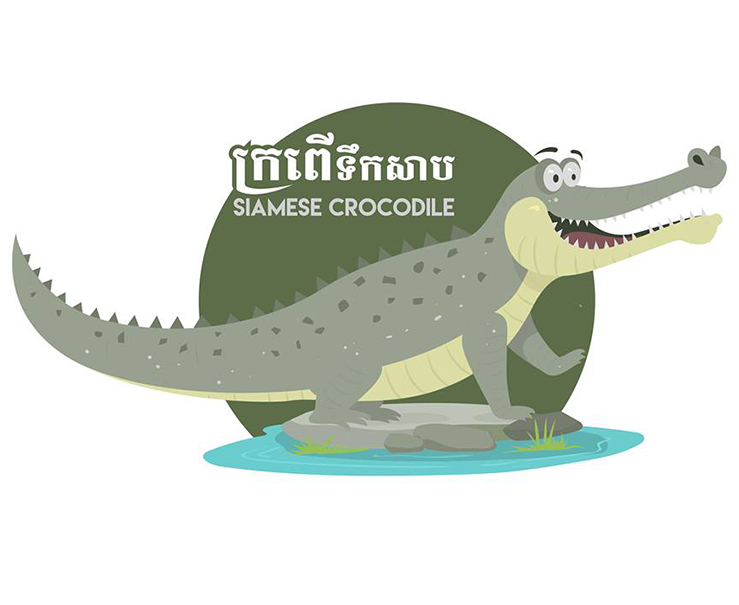
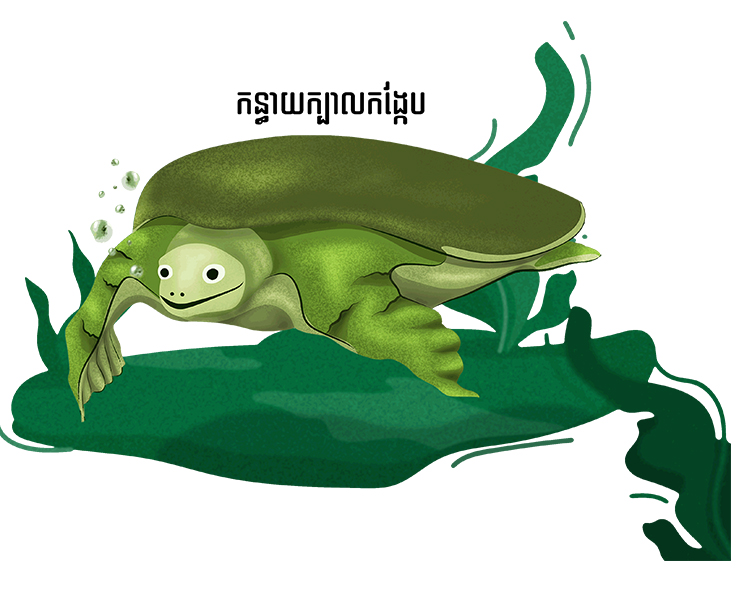
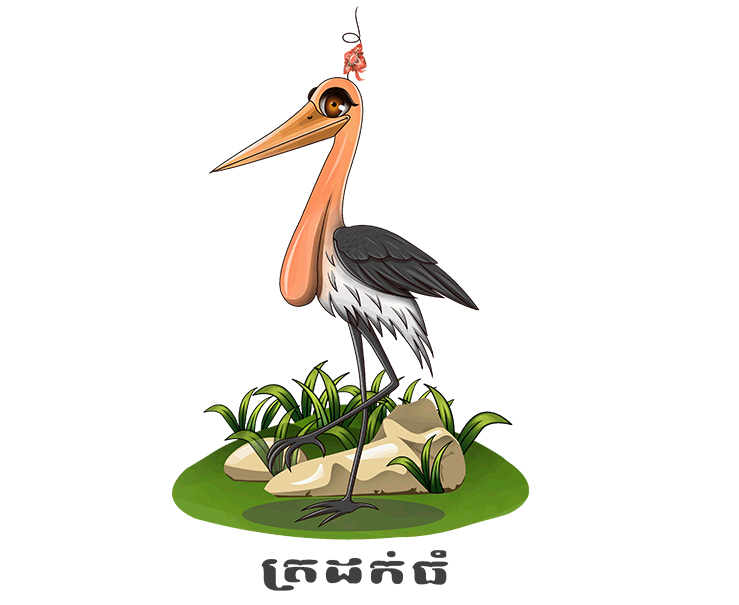
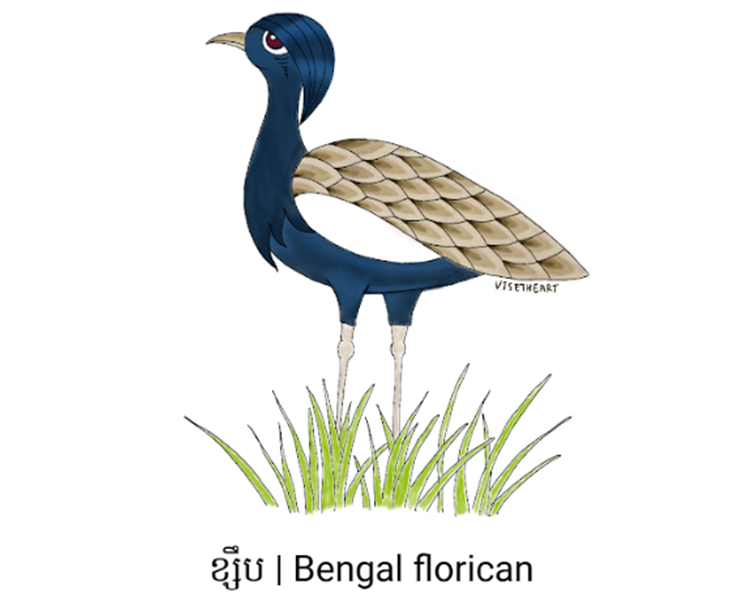
THE MEKONG SONG "MACHAS TONLE" BY YEA: MEKONG GENERATION 1
People in almost every age nowadays love to listen to interesting, new, and original music!!!
Young Eco Ambassador: Mekong Generation, are confident in doing an original song “Machas Tonle” with amazing young artists “Smallworld Smallband” and “Peace Chong”. The strength and great connection between the Mekong River and people have faded away from generation to generation. People now are so much distance and almost forget about the river which once was the life of the people. The Mekong River is the source of nutrition, habitats, foods, transport, tourism, health, religion, and culture to the regions. Our ancient people were so grateful for the mother river and that was the reason the Mekong river came with many different names according to each region, written on the temple walls, and ancient festivals to remind people from generation to generation.
Many beautiful songs also were written in the old time to describe how wonderful and grateful our people were for the Mekong river. The act of forgetting what we should be grateful for causes lack of action, loss resources, and life. The song will bring a sense of freshness as if the listener lingers along the river, describing the scenery and biodiversity along the river, along with the author’s fantasy of the dolphin-human love which illustrates human close connection with nature. The deep meaning of the characters’ sincere feeling, the scenery and each scene written in the song will be eye-opening to the beauty of the river, and the priceless value of the Mekong River. We hope to send our love and gratitude to the Mekong River by sharing this song with millions of Cambodians.
You can listen to the Mekong Song “Machas Tonle” on Young Eco Ambassador Official YouTube Channel and stream on Pleng App by Smart.
Coloring fish in our country By: Wonders of the Mekong Project
The book “Coloring Fish in our Country” is the first work of the Wonders of the Mekong Project, a project supported by USAID and partnerships with a number of organizations to work on raising awareness of the Mekong River and trying to present it. From the value of conservation work, ecological services, the cultural heritage and biodiversity of the Mekong River, which is a habitat for fish, a source of food for wildlife and humans.
This book “Coloring Fish in our Country”, is designed for children as well as their parents to learn about the species of fish found in the Mekong and Tonle Sap rivers. In addition, while enjoying coloring, children can learn about important fish species with information such as Khmer names, English and scientific names, biological characteristics of fish life, and classification of rare and endangered fish species. Some extinct on the IUCN Red List as well. Click here to download.
STORYBOOK "KIRI" By BY YEA: MEKONG GENERATION 1
[…The sound of bells ringing is waking up Kiri earlier this morning, Kiri woke up and started his day but today is not just a normal day for him. Looking through the window, there is a balloon cart near the wooden fence in front of his house. Among many balloons with different colors, Kiri is fascinated by one sprinkle red balloon. Little did he know that the red balloon is key to another universe where he could save the earth. Making new friends, fighting against monstrous creatures, a heroic adventure is waiting for Kiri…]
“Kiri” referred to the name of the storybook as well as the name of a character of a young brave boy who has the ambition to save nature and the environment from the great disaster. ‘Kiri’ book is a short, fantasy, adventurous and educational storybook, which is a significant education material that encourages and motivate children to express their courage, shape their thought, enrich their imagination, cultivate deeper understanding, and conception toward their dream and ambition. Reading and learning at an early age is essential for children and thus we are encouraging either parents or teachers who are interested in environmental awareness toward the children and students could get the ‘Kiri’ storybook free of charge or click here to download.
PUZZLE CUBE GAME BY YEA: MEKONG GENERATION 1
With more than one thousand fish species in the Mekong River, we would like to highlight the 30 species through our game. To start the game, first of all, the players are required to pick one fish card. On one side of the card has pictures of the fish, and on the other side of the card, there is information about habitat, the characteristics, its migration, IUCN red list status of the species. Then the Players could start the game as an individual or team competition.
The Puzzle Cube Game helps enhance players’ concentration ability, problem-solving skills, and patience on top of fun environmental education. Especially, we encourage bringing this Puzzle Cube Game to educational institutions at all levels, starting from primary school to high school so that children and youth are able to identify all these fish species more comprehensively and contribute to protect as well as to conserve these resources in the future. Click here to download. Let’s play the Puzzle! Let’s Explore!
CARD GAME By BY YEA: MEKONG GENERATION 1
The Mekong is estimated to provide habitats for at least 1100 species of fish. Some species are abundant on the floodplain and its wetlands, some favor lowland rivers, and some are found in tributaries, but all migrate between different habitats to reproduce and complete their life cycle, and they are facing some critical factors during their migration including overfishing activities, Illegal fishing gears, and Dam..etc.
Thus, with the Fishing Game, the players will know several significant factors—such as conservationists, protected areas, and flooding—that could maintain sustainable fishing. Moreover, the game also represents the livelihood of the local people as fishing has become one of their traditions for living especially for people who live along the river.
There are two players in the game, one represents the Fisherman and another one represents the Fish. And each of them will receive three types of cards such as identity cards, special cards, and instant cards. To win the game, each player has to collect the cards of their opponents as many as they can, yet the players must be aware that they have to spend their cards properly in order to go further in the game. The more cards they collected, the more chances they have, to exchange for the Treasure Cards to be the WINNER. Go Fishing! Go Spawning! Stay Sustainable! Click here to download “The Card Game”
STORYBOOK - SAMNANG AND THE GIANT CATFISH BY SAVE CAMBODIA'S WILDLIFE
Be part of the encounter between a young boy, Samnang, and a Giant Catfish!
The story of the long journey of a Giant Catfish trying to find a safe habitat in the mighty Mekong and Tonle Sap Lake with a kindhearted boy, Samnang, will bring joy to the readers.
This book from “Save the Wildlife Organization” contains updated information on fish migration and the threats they face, for example, hydropower dams. This publication contains many games, coloring pages, and practical tips for nature protection and biodiversity conservation. Contact Save Cambodia’s Wildlife for more information.

